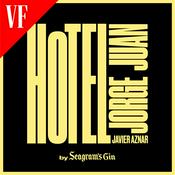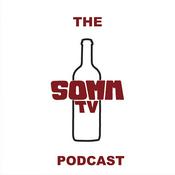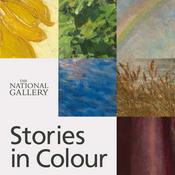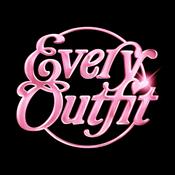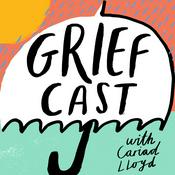278 episodios
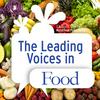
Posting calorie counts on menus should be just one strategy of many
16/12/2025 | 33 min
In this episode of the Leading Voices in Food podcast, Norbert Wilson of Duke University's Sanford School of Public Policy speaks with researchers Jean Adams from the University of Cambridge and Mike Essman from Duke's World Food Policy Center. They discuss the mandatory calorie labeling policy introduced in England in April 2022 for large food-away-from-home outlets. The conversation covers the study recently published in the British Medical Journal, exploring its results, strengths, limitations, and implications within the broader context of food labeling and public health policies. Key findings include a slight overall reduction in calorie content offered by food outlets, driven by the removal of higher-calorie items rather than reformulation. The discussion also touches on the potential impacts on different consumer groups, the challenges of policy enforcement, and how such policies could be improved to more effectively support public health goals. Interview Summary Now everyone knows eating out is just part of life. For many, it's a place to make connections, can be a guilty pleasure, and sometimes it's just an outright necessity for busy folks. But it is also linked to poor dietary quality, weight gain, and even obesity. For policymakers, the challenge is identifying what policy changes can help improve population health. Jean, let's begin with you. Can you tell our listeners about the UK's menu labeling intervention and what change did you hope to see? Jean - Yes, so this was a policy that was actually a really long time in coming and came in and out of favor with a number of different governments. So maybe over the last 10 years we've had various different suggestions to have voluntary and/or mandatory calorie labeling in the out-of-home sector. Eventually in April, 2022, we did have new mandatory regulations that came into a force that required large businesses just in England - so not across the whole of the UK, just in England - if they sold food and non-alcoholic drinks and they had to display the calories per portion of every item that they were selling. And then have alongside that somewhere on their menu, a statement that said that adults need around 2000 calories per day. The policy applied just to large businesses, and the definition of that was that those businesses have 250 or more employees, but the employees didn't all have to be involved in serving food and drinks. This might apply also to a large hotel chain who just have some bars or something in their hotels. And the food and drinks covered were things that were available for immediate consumption. Not prepackaged. And then there was also this proviso to allow high-end restaurants to be changing their menus regularly. So, it was only for things that were on the menu for at least 30 days. You mentioned that this policy or a menu labeling might have at least two potential modes of impacts. There's first this idea that providing calories or any sort of labeling on food can somehow provide information for consumers to make what we might hope would be better choices. Might help them choose lower calorie options or healthier options. And then the second potential impact is that businesses might also use the information to change what sort of foods they're serving. It might be that they didn't realize how many calories were in the foods and they're suddenly embarrassed about it. Or as soon as their customers realize, they start to put a little bit of pressure on, you know, we want something a little bit lower calorie. So, there's this potential mechanism that operates at the demand side of how consumers might make choices. And another one at the supply side of what might be available to consumers. And we knew from previous evaluations of these sorts of interventions that there was some evidence that both could occur. Generally, it seems to be that findings from other places and countries are maybe null to small. So, we were thinking that maybe we might see something similar in England. Thank you for sharing that background. I do have a question about the length of time it took to get this menu labeling law in place. Before we get into the results, do you have a sense of why did it take so long? Was it industry pushback? Was it just change of governments? Do you have a sense of that? Jean - Yes, so I think it's probably a bit of both. To begin with, it was first proposed as a voluntary measure actually by industry. So, we had this kind of big public-private partnership. What can industry do to support health? And that was one of the things they proposed. And then they didn't really do it very well. So, there was this idea that everybody would do it. And in fact, we found maybe only about 20% of outlets did it. And then definitely we have had government churn in the UK over the last five years or so. So, every new prime minister really came in and wanted to have their own obesity policy threw out the last one started over. And every policy needs consulted on with the public and then with industry. And that whole process just kind of got derailed over and over again. Thank you. That is really helpful to understand that development of the policy and why it took time. Industry regulated policy can be a tricky one to actually see the results that we would hope. You've already given us a sort of insight into what you thought the results may be from previous studies - null to relatively small. So, Mike, I want to turn to you. Can you tell us what came out of the data? Mike - Thank you, yes. So, we found a small overall drop in average calories offered per item. That amounts to a total of nine calories per item reduction in our post policy period relative to pre policy. And this is about a 2% reduction. It was statistically significant and we do in public health talk about how small effects can still have big impacts. So, I do want to sort of put that out there, but also recognize that it was a small overall drop in calories. And then what we did is we looked at how different food groups changed, and also how calories changed at different types of restaurants, whether it was fast food, restaurants, sit downs that we call pubs, bars, and inns. And then also other different types of takeaways like cafes and things like that where you might get a coffee or a cappuccino or something like that. What we found was driving the overall reduction in calories was a reduction in higher calorie items. So, as Jean mentioned at the outset, one of the things we were trying to identify in this analysis was whether we saw any evidence of reformulation. And we defined reformulation as whether specific products were reduced in their calories so that the same products were lower calories in the post period. We define that as reformulation. And that would be different from, say, a change in menu offering where you might identify a high calorie item and take it off the menu so that then the overall calories offered goes down on average. We found more evidence for the latter. Higher calorie items were removed. We separated into categories of removed items, items that were present in both periods, and new items added in the post period. There were higher calorie items in the removed group. The items that were present in both periods did not change. The new items were lower calorie items. What this says overall is this average reduction is driven by taking off high calorie items, adding some slightly lower calorie items. But we did not find evidence for reformulation, which is a crucial finding as well. We saw that the largest reductions occurred in burgers, beverages and a rather large mixed group called Mains. So, burgers reduced by 103 calories per item. That's pretty substantial. One of the reasons that's so large is that burgers, particularly if they're offered at a pub and might even come with fries or chips, as they say in the UK. And because they have such a high baseline calorie level, there's more opportunity to reduce. So, whether it's making it slightly smaller patty or reducing the cheese or something like that, that's where we saw larger reductions among the burgers. With beverages, typically, this involved the addition of lower calorie options, which is important if it gives an opportunity for lower calorie selections. And that was the main driver of reduction there. And then also we saw in Mains a reduction of 30 calories per item. A couple of the other things we wanted to identify is whether there was a change in the number of items that were considered over England's recommended calories per meal. The recommended calories per meal is 600 calories or less for lunch and dinner. And we saw no statistical change in that group. So overall, we do see a slight reduction in average calories. But this study did not examine changes in consumer behavior. I do want to just briefly touch on that because this was part of a larger evaluation. Another study that was published using customer surveys that was published in Nature Human Behavior found no change in the average calories purchased or consumed after the policy. This evaluation was looking at both the supply and the demand side changes as a result of this policy. Thanks, Mike and I've got lots of questions to follow up, but I'll try to control myself. The first one I'm interested to understand is you talk about the importance of the really calorie-heavy items being removed and the introduction of newer, lower calorie items. And you said that this is not a study of the demand, but I'm interested to know, do you have a sense that the higher calorie items may not have been high or top sellers. It could be easy for a restaurant to get rid of those. Do you have any sense of, you know, the types of items that were removed and of the consumer demand for those items? Mike - Yes. So, as I mentioned, given that the largest changes were occurring among burgers, we're sort of doing this triangulation attempt to examine all of the different potential impacts we can with the study tools we have. We did not see those changes reflected in consumer purchases. So, I think sticking with the evidence, the best thing we could say is that the most frequently purchased items were not the ones that were being pulled off of menus. I think that would be the closest to the evidence. Now, no study is perfect and we did in that customer survey examine the purchases and consumption of about 3000 individuals before and after the policy. It's relatively large, but certainly not fully comprehensive. But based on what we were able to find, it would seem that those reductions in large calorie items, it's probably fair to say, were sort of marginal choices. So, we see some reduction in calories at the margins. That's why the overall is down, but we don't see at the most commonly sold. I should also mention in response to that, a lot of times when we think about eating out of home, we often think about fast food. We did not see reductions in fast food chains at all, essentially. And so really the largest reductions we found were in what would be considered more sit-down dining establishment. For example, sit-down restaurants or even pubs, bars and ends was one of our other categories. We did see average reductions in those chains. The areas you kind of think about for people grabbing food quickly on the go, we did not see reductions there. And we think some of this is a function of the data itself, which is pubs, bars and inns, because they offer larger plates, there's a little bit more space for them to reduce. And so those are where we saw the reductions. But in what we might typically think is sort of the grab and go type of food, we did not see reductions in those items. And so when we did our customer surveys, we saw that those did not lead to reductions in calories consumed. Ahh, I see this and thank you for this. It sounds like the portfolio adjusted: getting rid of those heavy calorie items, adding more of the lower calorie items that may not have actually changed what consumers actually eat. Because the ones that they typically eat didn't change at all. And I would imagine from what you've said that large global brands may not have made many changes, but more local brands have more flexibility is my assumption of that. So that, that's really helpful to see. As you all looked at the literature, you had the knowledge that previous studies have found relatively small changes. Could you tell us about what this work looks like globally? There are other countries that have tried policy similar to this. What did you learn from those other countries about menu labeling? Jean - Well, I mean, I'm tempted to say that we maybe should have learned that this wasn't the sort of policy that we could expect to make a big change. To me one of the really attractive features of a labeling policy is it kind of reflects back those two mechanisms we've talked about - information and reformulation or changing menus. Because we can talk about it in those two different ways of changing the environment and also helping consumers make better choices, then it can be very attractive across the political landscape. And I suspect that that is one of the things that the UK or England learned. And that's reflected in the fact that it took a little while to get it over the line, but that lots of different governments came back to it. That it's attractive to people thinking about food and thinking about how we can support people to eat better in kind of a range of different ways. I think what we learned, like putting the literature all together, is this sort of policy might have some small effects. It's not going to be the thing that kind of changes the dial on diet related diseases. But that it might well be part of an integrated strategy of many different tools together. I think we can also learn from the literature on labeling in the grocery sector where there's been much more exploration of different types of labeling. Whether colors work, whether black stop signs are more effective. And that leads us to conclusions that these more interpretive labels can lead to bigger impacts and consumer choices than just a number, right? A number is quite difficult to make some sense of. And I think that there are some ways that we could think about optimizing the policy in England before kind of writing it off as not effective. Thank you. I think what you're saying is it worked, but it works maybe in the context of other policies, is that a fair assessment? Jean - Well, I mean, the summary of our findings, Mike's touched on quite a lot of it. We found that there was an increase in outlets adhering to the policy. That went from about 20% offered any labeling to about 80%. So, there were still some places that were not doing what they were expected to do. But there was big changes in actual labeling practice. People also told us that they noticed the labels more and they said that they used them much more than they were previously. Like there was some labeling before. We had some big increases in noticing and using. But it's... we found this no change in calories purchased or calories consumed. Which leads to kind of interesting questions. Okay, so what were they doing with it when they were using it? And maybe some people were using it to help them make lower calorie choices, but other people were trying to optimize calories for money spent? We saw these very small changes in the mean calorie of items available that Mike's described in lots of detail. And then we also did some work kind of exploring with restaurants, people who worked in the restaurant chains and also people responsible for enforcement, kind of exploring their experiences with the policy. And one of the big conclusions from that was that local government were tasked with enforcement, but they weren't provided with any additional resources to make that happen. And for various reasons, it essentially didn't happen. And we've seen that with a number of different policies in the food space in the UK. That there's this kind of presumption of compliance. Most people are doing it all right. We're not doing it a hundred percent and that's probably because it's not being checked and there's no sanction for not following the letter of the law. One of the reasons that local authorities are not doing enforcement, apart from that they don't have resources or additional resources for it, is that they have lots of other things to do in the food space, and they see those things as like higher risk. And so more important to do. One of those things is inspecting for hygiene, making sure that the going out is not poisonous or adulterated or anything like that. And you can absolutely understand that. These things that might cause acute sickness, or even death in the case of allergies, are much more important for them to be keeping an eye on than labeling. One of the other things that emerged through the process of implementation, and during our evaluation, was a big concern from communities with experience of eating disorders around kind of a greater focus on calorie counting. And lots of people recounting their experience that they just find that very difficult to be facing in a space where they're maybe not trying to think about their eating disorder or health. And then they're suddenly confronted with it. And when we've gone back and looked at the literature, there's just not very much literature on the impact of calorie labeling on people with eating disorders. And so we're a little bit uncertain still about whether that is a problem, but it's certainly perceived to be a problem. And lots of people find the policy difficult for that reason because they know someone in their family or one of their friends with an eating disorder. And they're very alert to that potential harm. I think this is a really important point to raise that the law, the menu labeling, could have differential effects on different consumers. I'm not versed in this literature on the triggering effects of seeing menu labeling for people with disordered eating. But then I'm also thinking about a different group of consumers. Consumers who are already struggling with obesity, and whether or not this policy is more effective for those individuals versus folks who are not. In the work that you all did, did you have any sense of are there heterogeneous effects of the labeling? Did different consumers respond differentially to seeing the menu label? Not just, for example, individuals maybe with disordered eating? Mike - In this work, we mostly focused on compliance, customer responses in terms of consumption and purchases, changes in menus, and customers reporting whether or not they increase noticing and using. When we looked at the heterogeneous effects, some of these questions are what led us to propose a new project where we interviewed people and tried to understand their responses to calorie labeling. And there we get a lot of heterogenous groups. In those studies, and this work has not actually been published, but should be in the new year, we found that there's a wide range of different types of responses to the policy. For example, there may be some people who recently started going to the gym and maybe they're trying to actually bulk up. And so, they'll actually choose higher calorie items. Conversely, there may be people who have a fitness routine or a dieting lifestyle that involves calorie tracking. And they might be using an app in order to enter the calories into that. And those people who are interested in calorie counting, they really loved the policy. They really wanted the policy. And it gave them a sense of control over their diet. And they felt comfortable and were really worried that if there was evidence that it wouldn't work, that would be taken away. Then you have a whole different group of people who are living with eating disorders who don't want to interact with those numbers when they are eating out of home. They would rather eat socially and not have to think about those challenges. There's really vast diversity in terms of the responses to the policy. And that does present a challenge. And I think what it also does is cause us just to question what is the intended mechanism of action of this policy? Because when the policy was implemented, there's an idea of a relatively narrow set of effects. If customers don't understand the number of calories that are in their items, you just provide them with the calories that are in those items, they will then make better choices as rational actors. But we know that eating out of home is far more complex. It's social. There are issues related to value for money. So maybe people want to make sure they're purchasing food that hasn't been so reduced in portions that now they don't get the value for money when they eat out. There are all sorts of body image related challenges when people may eat out. We didn't find a lot of evidence of this in our particular sample, but also in some of our consultation with the public in developing the interview, there's concern about judgment from peers when eating out. So, it's a very sensitive topic. Some of the implications of that are we do probably need more communication strategies that can come alongside these policies and sort of explain the intended mechanism impact to the public. We can't expect to simply add numbers to items and then expect that people are going to make the exact choices that are sort of in the best interest of public health. And that sort of brings us on to some potential alternative mechanisms of impact and other modes of labeling, and those sorts of things. Mike, this has been really helpful because you've also hinted at some of the ways that this policy as implemented, could have been improved. And I wonder, do you have any other thoughts to add to how to make a policy like this have a bigger impact. Mike - Absolutely. One of the things that was really helpful when Jean laid out her framing of the policy was there's multiple potential mechanisms of action. One of those is the potential reformulation in menu change. We talked about those results. Another intended mechanism of action is through consumer choice. So, if items have fewer calories on average, then that could reduce ultimately calories consumed. Or if people make choices of lower calorie items, that could also be a way to reduce the overall calories consumed. And I would say this calorie labeling policy, it is a step because the calories were not previously available. People did not know what they were eating. And if you provide that, that fulfills the duty of transparency by businesses. When we spoke to people who worked in enforcement, they did support the policy simply on the basis of transparency because it's important for people to understand what they're consuming. And so that's sort of a generally acceptable principle. However, if we want to actually have stronger population health impact, then we do need to have stronger mechanisms of action. One of the ways that can reduce calories consumed by the consumers, so the sort of demand side, would be some of the interpretive labels. Jean mentioned them earlier. There's now a growing body of evidence of across, particularly in Latin America. I would say some of the strongest evidence began in Chile, but also in Mexico and in other Latin American countries where they've put warning labels on items in order to reduce their consumption. These are typically related to packaged foods is where most of the work has been done. But in order to reduce consumer demand, what it does is rather than expecting people to be sort of doing math problems on the fly, as they go around and make their choices, you're actually just letting them know, well, by the way, this is an item that's very high in calories or saturated fat, or sodium or sugars. Or some combination of those. What that does is you've already helped make that decision for the consumers. You've at least let them know this item has a high level of nutrients of concern. And you can take that away. Conversely, if you have an item that's 487 calories, do you really know what you're going to do with that information? So that's one way to have stronger impact. The other way that that type of policy can have stronger impact is it sets clear thresholds for those warnings. And so, when you have clear thresholds for warnings, you can have a stronger mechanism for reformulation. And what companies may want to do is they may not want to display those warning labels, maybe because it's embarrassing. It makes their candy or whatever the unhealthy food look bad. Sort of an eyesore, which is the point. And what they'll do is they can reformulate those nutrients to lower levels so that they no longer qualify for that regulation. And so there are ways to essentially strengthen both of those mechanisms of action. Whereas when it's simply on the basis of transparency, then what that does is leave all of the decision making and work on the consumer. Mike, this is great because I've worked with colleagues like Gabby Fretes and Sean Cash and others on some menu labeling out of Chile. And we're currently doing some work within the center on food nutrition labels to see how different consumers are responding. There's a lot more work to be done in this space. And, of course, our colleagues at UNC (University of North Carolina-Chapel Hill) have also been doing this work. So, this work is really important because it tells us how it can help consumers make different choices, and how it can affect how companies behave. My final question to the two of you is simply, what would you like policymakers to learn from this study? Or maybe not just this study alone, but this body of work. What should they take away? Jean - Well, I think there's lots of information out there on how to do food labeling well, and we can certainly learn from that. And Mike talks about the work from South America particularly where they're helping people identify the least healthy products. And they're also providing messaging around what you should do with that - like choose a product with fewer of these black symbols. But I think even if labeling is optimized, it's not really going to solve our problem of dietary related diseases. And I think I always want policymakers to know, and I think many of them do understand this, that there is no one magic solution and we need to be thinking about labeling as part of a strategy that addresses marketing in its entirety, right? Companies are using all sorts of strategies to encourage us to buy products. We need to be thinking of all sorts of strategies to support people to buy different products and to eat better. And I think that focuses on things like rebalancing price, supporting people to afford healthier food, focusing advertising and price promotions on healthier products. And I also think we need to be looking even further upstream though, right? That we need to be thinking about the incentives that are driving companies to make and sell less healthy products. Because I don't think that they particularly want to be selling less healthy products or causing lots of illness. It's those products are helping them achieve their aims of creating profit and growth for their shareholders. And I think we need to find creative ways to support companies to experiment with healthier products that either help them simultaneously achieve those demands of profit or growth. Or somehow allow them to step away from those demands either for a short period or for a longer period. I think that that requires us to kind of relook at how we do business in economics in our countries. Mike? Yes, I think that was a really thorough answer by Jean. So, I'll just add a couple points. I think most fundamentally what we need to think about when we're doing policy making to improve diet is we need to always think about are we helping to make the healthier choice the easier choice? And what that means is we're not implementing policies that merely provide information that then require individuals to do the rest of the work. We need to have a food environment that includes healthier options that are easily accessible, but also affordable. That's one thing that's come through in quite a lot of the work we've done. There are a lot of concerns about the high cost of food. If people feel like the healthier choices are also affordable choices, that's one of many ways to support the easier choice. And I really just want to reiterate what Jean said in terms of the economics of unhealthy food. In many ways, these large multinational corporations are from their perspective, doing right by their shareholders by producing a profitable product. Now there are debates on whether or not that's a good thing, of course. There's quite a lot of evidence for the negative health impacts of ultra-processed (UPF) products, and those are getting a lot more attention these days and that's a good thing. What we do need to think about is why is it that UPFs are so widely consumed. In many ways they are optimized to be over consumed. They're optimized to be highly profitable. Because the ingredients that are involved in their production means that they can add a lot of salt, sugar, and fat. And what that does is lead to overconsumption. We need to think about that there's something fundamentally broken about this incentive structure. That is incentivizing businesses to sell unhealthy food products with these food additives that lead to over consumption, obesity, and the associated comorbidities. And if we can start to make a little progress and think creatively about how could we incentivize a different incentive structure. One where actually it would be in a food business's best interest to be much more innovative and bolder and produce healthier products for everyone. That's something that I think we will have to contend with because if we are thinking that we are only going to be able to restrict our way out of this, then that's very difficult. Because people still need to have healthy alternatives, and so we can't merely think about restricting. We also have to think about how do we promote access to healthier foods. This is great insight. I appreciate the phrasing of making the healthy choice the easy choice, and I also heard a version of this making the healthy choice the affordable choice. But it also seems like we need to find ways to make the healthy choice the profitable choice as well. Bios: Jean Adams is a Professor of Dietary Public Health and leads the Population Health Interventions Programme at the University of Cambridge MRC Epidemiology Unit. Adams trained in medicine before completing a PhD on socio-economic inequalities in health. This was followed by an MRC Health of the Population fellowship and an NIHR Career Development Fellowship both exploring influences on health behaviours and socio-economic inequalities in these. During these fellowships Jean was appointed Lecturer, then Senior Lecturer, in Public Health at Newcastle University. Jean moved to Cambridge University to join the MRC Epidemiology Unit and CEDAR in 2014 where she helped establish the Dietary Public Health group. She became Programme Leader in the newly formed Population Health Interventions programme in 2020, and was appointed Professor of Dietary Public Health in 2022. Mike Essman is a Research Scientist at Duke University's World Food Policy Center. His background is in evaluating nutrition and food policies aimed at improving diets and preventing cardiometabolic diseases. His work employs both quantitative and qualitative methods to explore drivers of dietary behavior, particularly ultra-processed food consumption, across diverse environments and countries. Mike earned his PhD in Nutrition Epidemiology from the University of North Carolina at Chapel Hill, where his research focused on evaluating the impacts of a sugary beverage tax in South Africa. He completed MSc degrees in Medical Anthropology and Global Health Science at the University of Oxford through a fellowship. Prior to joining Duke, he conducted research at the MRC Epidemiology Unit at the University of Cambridge, where he evaluated the impacts of calorie labeling policies in England and led a study examining public perceptions of ultra-processed foods.

E287: Food policy insights from government agency insider Jerold Mande
25/11/2025 | 32 min
In this episode, Kelly Brownell speaks with Jerold Mande, CEO of Nourish Science, adjunct professor at the Harvard School of Public Health, and former Deputy Undersecretary for Food Safety at the USDA. They discuss the alarming state of children's health in America, the challenges of combating poor nutrition, and the influence of the food industry on public policy. The conversation explores the parallels between the tobacco and food industries and proposes new strategies for ensuring children reach adulthood in good health. Mande emphasizes the need for radical changes in food policy and the role of public health in making these changes. Transcript So, you co-founded this organization along with Jerome Adams, Bill Frist and Thomas Grumbly, as we said, to ensure every child breaches age 18 at a healthy weight and in good metabolic health. That's a pretty tall order given the state of the health of youth today in America. But let's start by you telling us what inspired this mission and what does it look like to achieve this in today's food environment? I was trained in public health and also in nutrition and in my career, which has been largely in service of the public and government, I've been trying to advance those issues. And unfortunately over the arc of my career from when I started to now, particularly in nutrition and public health, it's just gotten so much worse. Indeed today Americans have the shortest lifespans by far. We're not just last among the wealthy countries, but we're a standard deviation last. But probably most alarming of all is how sick our children are. Children should not have a chronic disease. Yet in America maybe a third do. I did some work on tobacco at one point, at FDA. That was an enormous success. It was the leading cause of death. Children smoked at a higher rate, much like child chronic disease today. About a third of kids smoked. And we took that issue on, and today it's less than 2%. And so that shows that government can solve these problems. And since we did our tobacco work in the early '90s, I've changed my focus to nutrition and public health and trying to fix that. But we've still made so little progress. Give us a sense of how far from that goal we are. So, if the goal is to make every child reaching 18 at a healthy weight and in good metabolic health, what percentage of children reaching age 18 today might look like that? It's probably around a half or more, but we're not quite sure. We don't have good statistics. One of the challenges we face in nutrition is, unfortunately, the food industry or other industries lobby against funding research and data collection. And so, we're handicapped in that way. But we do know from the studies that CDC and others have done that about 20% of our children have obesity about a similar number have Type 2 diabetes or the precursors, pre-diabetes. You and I started off calling it adult-onset diabetes and they had to change that name to a Type 2 because it's becoming so common in kids. And then another disease, fatty liver disease, really unthinkable in kids. Something that the typical pediatrician would just never see. And yet in the last decade, children are the fastest growing group. I think we don't know an exact number, but today, at least a third, maybe as many as half of our children have a chronic disease. Particularly a food cause chronic disease, or the precursors that show they're on the way. I remember probably going back about 20 years, people started saying that we were seeing the first generation of American children that would lead shorter lives than our parents did. And what a terrible legacy to leave our children. Absolutely. And that's why we set that overarching goal of ensuring every child reaches age 18 in good metabolic health. And the reason we set that is in my experience in government, there's a phrase we all use - what gets measured gets done. And when I worked at FDA, when I worked at USDA, what caught my attention is that there is a mission statement. There's a goal of what we're trying to achieve. And it's ensuring access to healthy options and information, like a food label. Now the problem with that, first of all, it's failed. But the problem with that is the bureaucrats that I oversaw would go into a supermarket, see a produce section, a protein section, the food labels, which I worked on, and say we've done our job. They would check those boxes and say, we've done it. And yet we haven't. And if we ensured that every child reaches age 18 at a healthy weight and good metabolic health, if the bureaucrats say how are we doing on that? They would have to conclude we're failing, and they'd have to try something else. And that's what we need to do. We need to try radically different, new strategies because what we've been doing for decades has failed. You mentioned the food industry a moment ago. Let's talk about that in a little more detail. You made the argument that food companies have substituted profits for health in how they design their products. Explain that a little bit more, if you will. And tell us how the shift has occurred and what do you think the public health cost has been? Yes, so the way I like to think of it, and your listeners should think of it, is there's a North star for food design. And from a consumer standpoint, I think there are four points on the star: taste, cost, convenience, and health. That's what they expect and want from their food. Now the challenge is the marketplace. Because that consumer, you and I, when we go to the grocery store and get home on taste, cost, and convenience, if we want within an hour, we can know whether the food we purchased met our standard there. Or what our expectations were. Not always for health. There's just no way to know in a day, a week, a month, even in a year or more. We don't know if the food we're eating is improving and maintaining our health, right? There should be a definition of food. Food should be what we eat to thrive. That really should be the goal. I borrowed that from NASA, the space agency. When I would meet with them, they said, ' Jerry, it's important. Right? It's not enough that people just survive on the food they eat in space. They really need to thrive.' And that's what WE need to do. And that's really what food does, right? And yet we have food, not only don't we thrive, but we get sick. And the reason for that is, as I was saying, the marketplace works on taste, cost and convenience. So, companies make sure their products meet consumer expectation for those three. But the problem is on the fourth point on the star: on health. Because we can't tell in even years whether it's meeting our expectation. That sort of cries out. You're at a policy school. Those are the places where government needs to step in and act and make sure that the marketplace is providing. That feedback through government. But the industry is politically strong and has prevented that. And so that has left the fourth point of the star open for their interpretation. And my belief is that they've put in place a prop. So, they're making decisions in the design of the product. They're taste, they gotta get taste right. They gotta get cost and convenience right. But rather than worrying what does it do to your health? They just, say let's do a profit. And that's resulted in this whole category of food called ultra-processed food (UPF). I actually believe in the future, whether it's a hundred years or a thousand years. If humanity's gonna thrive we need manmade food we can thrive on. But we don't have that. And we don't invest in the science. We need to. But today, ultra-processed food is manmade food designed on taste, cost, convenience, and then how do we make the most money possible. Now, let me give you one other analogy, if I could. If we were CEOs of an automobile company, the mission is to provide vehicles where people can get safely from A to point B. It's the same as food we can thrive on. That is the mission. The problem is that when the food companies design food today, they've presented to the CEO, and everyone gets excited. They're seeing the numbers, the charts, the data that shows that this food is going to meet, taste, cost, convenience. It's going to make us all this money. But the CEO should be asking this following question: if people eat this as we intend, will they thrive? At the very least they won't get sick, right? Because the law requires they can't get sick. And if the Midmanagers were honest, they'd say here's the good news boss. We have such political power we've been able to influence the Congress and the regulatory agencies. That they're not going to do anything about it. Taste, cost, convenience, and profits will work just fine. Couldn't you make the argument that for a CEO to embrace that kind of attitude you talked about would be corporate malpractice almost? That, if they want to maximize profits then they want people to like the food as much as possible. That means engineering it in ways that make people overeat it, hijacking the reward pathways in the brain, and all that kind of thing. Why in the world would a CEO care about whether people thrive? Because it's the law. The law requires we have these safety features in cars and the companies have to design it that way. And there's more immediate feedback with the car too, in terms of if you crashed right away. Because it didn't work, you'd see that. But here's the thing. Harvey Wiley.He's the founder of the food safety programs that I led at FDA and USDA. He was a chemist from academia. Came to USDA in the late 1800s. It was a time of great change in food in America. At that point, almost all of families grew their own food on a farm. And someone had to decide who's going to grow our food. It's a family conversation that needed to take place. Increasingly, Americans were moving into the cities at that time, and a brand-new industry had sprung up to feed people in cities. It was a processed food industry. And in order to provide shelf stable foods that can offer taste, cost, convenience, this new processed food industry turned to another new industry, a chemical industry. Now, it's hard to believe this, but there was a point in time that just wasn't an industry. So these two big new industries had sprung up- processed food and chemicals. And Harvey Wiley had a hypothesis that the chemicals they were using to make these processed foods were making us sick. Indeed, food poisoning back then was one of the 10 leading causes of death. And so, Harvey Wiley went to Teddy Roosevelt. He'd been trying for years within the bureaucracy and not making progress. But when Teddy Roosevelt came in, he finally had the person who listened to him. Back then, USDA was right across from the Washington Monument to the White House. He'd walk right over there into the White House and met with Teddy Roosevelt and said, ' this food industry is making us sick. We should do something about it.' And Teddy Roosevelt agreed. And they wrote the laws. And so I think what your listeners need to understand is that when you look at the job that FDA and USDA is doing, their food safety programs were created to make sure our food doesn't make us sick. Acutely sick. Not heart disease or cancer, 30, 40 years down the road, but acutely sick. No. I think that's absolutely the point. That's what Wiley was most concerned about at the time. But that's not the law they wrote. The law doesn't say acutely ill. And I'll give you this example. Your listeners may be familiar with something called GRAS - Generally Recognized as Safe. It's a big problem today. Industry co-opted the system and no longer gets approval for their food additives. And so, you have this Generally Recognized as Safe system, and you have these chemicals and people are worried about them. In the history of GRAS. Only one chemical has FDA decided we need to get that off the market because it's unsafe. That's partially hydrogenated oils or trans-fat. Does trans-fat cause acute illness? It doesn't. It causes a chronic disease. And the evidence is clear. The agency has known that it has the responsibility for both acute and chronic illness. But you're right, the industry has taken advantage of this sort of chronic illness space to say that that really isn't what you should be doing. But having worked at those agencies, I don't think they see it that way. They just feel like here's the bottom line on it. The industry uses its political power in Congress. And it shapes the agency's budget. So, let's take FDA. FDA has a billion dollars with a 'b' for food safety. For the acute food safety, you're talking about. It has less than 25 million for the chronic disease. There are about 1400 deaths a year in America due to the acute illnesses caused by our food that FDA and USDA are trying to prevent. The chronic illnesses that we know are caused by our food cause 1600 maybe a day. More than that of the acute every day. Now the agency should be spending at least half its time, if not more, worrying about those chronic illness. Why doesn't it? Because the industry used their political power in Congress to put the billion dollars for the acute illness. That's because if you get acutely ill, that's a liability concern for them. Jerry let's talk about the political influence in just a little more detail, because you're in a unique position to tell us about this because you've seen it from the inside. One mechanism through which industry might influence the political process is lobbyists. They hire lobbyists. Lobbyists get to the Congress. People make decisions based on contributions and things like that. Are there other ways the food industry affects the political process in addition to that. For example, what about the revolving door issue people talk about where industry people come into the administrative branch of government, not legislative branch, and then return to industry. And are there other ways that the political influence of the industry has made itself felt? I think first and foremost it is the lobbyists, those who work with Congress, in effect. Particularly the funding levels, and the authority that the agencies have to do that job. I think it's overwhelmingly that. I think second, is the influence the industry has. So let me back up to that a sec. As a result of that, we spend very little on nutrition research, for example. It's 4% of the NIH budget even though we have these large institutes, cancer, heart, diabetes, everyone knows about. They're trying to come up with the cures who spend the other almost 50 billion at NIH. And so, what happens? You and I have both been at universities where there are nutrition programs and what we see is it's very hard to not accept any industry money to do the research because there isn't the federal money. Now, the key thing, it's not an accident. It's part of the plan. And so, I think that the research that we rely on to do regulation is heavily influenced by industry. And it's broad. I've served, you have, others, on the national academies and the programs. When I've been on the inside of those committees, there are always industry retired scientists on those committees. And they have undue influence. I've seen it. Their political power is so vast. The revolving door, that is a little of both ways. I think the government learns from the revolving door as well. But you're right, some people leave government and try to undo that. Now, I've chosen to work in academia when I'm not in government. But I think that does play a role, but I don't think it plays the largest role. I think the thing that people should be worried about is how much influence it has in Congress and how that affects the agency's budgets. And that way I feel that agencies are corrupted it, but it's not because they're corrupted directly by the industry. I think it's indirectly through congress. I'd like to get your opinion on something that's always relevant but is time sensitive now. And it's dietary guidelines for America. And the reason I'm saying it's time sensitive is because the current administration will be releasing dietary guidelines for America pretty soon. And there's lots of discussion about what those might look like. How can they help guide food policy and industry practices to support healthier children and families? It's one of the bigger levers the government has. The biggest is a program SNAP or food stamps. But beyond that, the dietary guidelines set the rules for government spending and food. So, I think often the way the dietary guidelines are portrayed isn't quite accurate. People think of it in terms of the once (food) Pyramid now the My Plate that's there. That's the public facing icon for the dietary guidelines. But really a very small part. The dietary guidelines are meant to help shape federal policy, not so much public perception. It's there. It's used in education in our schools - the (My) Plate, previously the (Food) Pyramid. But the main thing is it should shape what's served in government feeding programs. So principally that should be SNAP. It's not. But it does affect the WIC program- Women, Infants and Children, the school meals program, all of the military spending on food. Indeed, all spending by the government on food are set, governed by, or directed by the dietary guidelines. Now some of them are self-executing. Once the dietary guidelines change the government changes its behavior. But the biggest ones are not. They require rulemaking and in particular, today, one of the most impactful is our kids' meals in schools. So, whatever it says in these dietary guidelines, and there's reason to be alarmed in some of the press reports, it doesn't automatically change what's in school meals. The Department of Agriculture would have to write a rule and say that the dietary guidelines have changed and now we want to update. That usually takes an administration later. It's very rare one administration could both change the dietary guidelines and get through the rulemaking process. So, people can feel a little reassured by that. So, how do you feel about the way things seem to be taking shape right now? This whole MAHA movement Make America Healthy Again. What is it? To me what it is we've reached this tipping point we talked about earlier. The how sick we are, and people are saying, 'enough. Our food shouldn't make us sick at middle age. I shouldn't have to be spending so much time with my doctor. But particularly, it shouldn't be hard to raise my kids to 18 without getting sick. We really need to fix that and try to deal with that.' But I think that the MAHA movement is mostly that. But RFK and some of the people around them have increasingly claimed that it means some very specific things that are anti-science. That's been led by the policies around vaccine that are clearly anti-science. Nutrition is more and more interesting. Initially they started out in the exact right place. I think you and I could agree the things they were saying they need to focus on: kids, the need to get ultra-processed food out of our diets, were all the right things. In fact, you look at the first report that RFK and his team put out back in May this year after the President put out an Executive Order. Mostly the right things on this. They again, focus on kids, ultra-processed food was mentioned 40 times in the report as the root cause for the very first time. And this can't be undone. You had the White House saying that the root cause of our food-caused chronic disease crisis is the food industry. That's in a report that won't change. But a lot has changed since then. They came out with a second report where the word ultra-processed food showed up only once. What do you think happened? I know what happened because I've worked in that setting. The industry quietly went to the White House, the top political staff in the White House, and they said, you need to change the report when you come out with the recommendations. And so, the first report, I think, was written by MAHA, RFK Jr. and his lieutenants. The second report was written by the White House staff with the lobbyists of the food industry. That's what happened. What you end up with is their version of it. So, what does the industry want? We have a good picture from the first Trump administration. They did the last dietary guidelines and the Secretary of Agriculture, then Sonny Perdue, his mantra to his staff, people reported to me, was the industries- you know, keep the status quo. That is what the industry wants is they really don't want the dietary guidelines to change because then they have to reformulate their products. And they're used to living with what we have and they're just comfortable with that. For a big company to reformulate a product is a multi-year effort and cost billions of dollars and it's just not what they want to have to do. Particularly if it's going to change from administration to administration. And that is not a world they want to live in. From the first and second MAHA report where they wanted to go back to the status quo away from all the radical ideas. It'll be interesting to see what happens with dietary guidelines because we've seen reports that RFK Jr. and his people want to make shifts in policies. Saying that they want to go back to the Pyramid somehow. There's a cartoon on TV, South Park, I thought it was produced to be funny. But they talked about what we need to do is we need to flip the Pyramid upside down and we need to go back to the old Pyramid and make saturated fat the sort of the core of the diet. I thought it meant to be a joke but apparently that's become a belief of some people in the MAHA movement. RFK. And so, they want to add saturated fat back to our diets. They want to get rid of plant oils from our diets. There is a lot of areas of nutrition where the science isn't settled. But that's one where it is, indeed. Again, you go back only 1950s, 1960s, you look today, heart disease, heart attacks, they're down 90%. Most of that had to do with the drugs and getting rid of smoking. But a substantial contribution was made by nutrition. Lowering saturated fat in our diets and replacing it with plant oils that they're now called seed oils. If they take that step and the dietary guidelines come out next month and say that saturated fat is now good for us it is going to be just enormously disruptive. I don't think companies are going to change that much. They'll wait it out because they'll ask themselves the question, what's it going to be in two years? Because that's how long it takes them to get a product to market. Jerry, let me ask you this. You painted this picture where every once in a while, there'll be a glimmer of hope. Along comes MAHA. They're critical of the food industry and say that the diet's making us sick and therefore we should focus on different things like ultra-processed foods. In report number one, it's mentioned 40 times. Report number two comes out and it's mentioned only once for the political reasons you said. Are there any signs that lead you to be hopeful that this sort of history doesn't just keep repeating itself? Where people have good ideas, there's science that suggests you go down one road, but the food industry says, no, we're going to go down another and government obeys. Are there any signs out there that lead you to be more hopeful for the future? There are signs to be hopeful for the future. And number one, we talked earlier, is the success we had regulating tobacco. And I know you've done an outstanding job over the years drawing the parallels between what happened in tobacco and food. And there are good reasons to do that. Not the least of which is that in the 1980s, the tobacco companies bought all the big food companies and imparted on them a lot of their lessons, expertise, and playbook about how to do these things. And so that there is a tight link there. And we did succeed. We took youth smoking, which was around a 30 percent, a third, when we began work on this in the early 1990s when I was at FDA. And today it's less than 2%. It's one area with the United States leads the world in terms of what we've achieved in public health. And there's a great benefit that's going to come to that over the next generation as all of those deaths are prevented that we're not quite seeing yet. But we will. And that's regardless of what happens with vaping, which is a whole different story about nicotine. But this idea success and tobacco. The food industry has a tobacco playbook about how to addict so many people and make so much money and use their political power. We have a playbook of how to win the public health fight. So, tell us about that. What you're saying is music to my ears and I'm a big believer in exactly what you're saying. So, what is it? What does that playbook look like and what did we learn from the tobacco experience that you think could apply into the food area? There are a couple of areas. One is going to be leadership and we'll have to come back to that. Because the reason we succeeded in tobacco was the good fortune of having a David Kessler at FDA and Al Gore as Vice President. Nothing was, became more important to them than winning this fight against a big tobacco. Al Gore because his sister died at a young age of smoking. And David Kessler became convinced that this was the most important thing for public health that he could do. And keep in mind, when he came to FDA, it was the furthest thing from his mind. So, one of it is getting these kinds of leaders. Did does RFK Jr. and Marty McCarey match up to Al Gore? And we'll see. But the early signs aren't that great. But we'll see. There's still plenty of time for them to do this and get it right. The other thing is having a good strategy and policy about how to do it. And here, with tobacco, it was a complete stretch, right? There was no where did the FDA get authority over tobacco? And indeed, we eventually needed the Congress to reaffirm that authority to have the success we did. As we talked earlier, there's no question FDA was created to make sure processed food and the additives and processed food don't make us sick. So, it is the core reason the agency exists is to make sure that if there's a thing called ultra-processed food, man-made food, that is fine, but we have to thrive when we eat it. We certainly can't be made sick when we eat it. Now, David Kessler, I mentioned, he's put forward a petition, a citizens' petition to FDA. Careful work by him, he put months of effort into this, and he wrote basically a detailed roadmap for RFK and his team to use if they want to regulate ultra-processed stuff food. And I think we've gotten some, initially good feedback from the MAHA RFK people that they're interested in this petition and may take action on it. So, the basic thrust of the Kessler petition from my understanding is that we need to reconsider what's considered Generally Recognized as Safe. And that these ultra-processed foods may not be considered safe any longer because they produce all this disease down the road. And if MAHA responds positively initially to the concept, that's great. And maybe that'll have legs, and something will actually happen. But is there any reason to believe the industry won't just come in and quash this like they have other things? This idea of starting with a petition in the agency, beginning an investigation and using its authority is the blueprint we used with tobacco. There was a petition we responded, we said, gee, you raised some good points. There are other things we put forward. And so, what we hope to see here with the Kessler petition is that the FDA would put out what's called an advanced notice of a proposed rulemaking with the petition. This moves it from just being a petition to something the agency is saying, we're taking this seriously. We're putting it on the record ourselves and we want industry and others now to start weighing in. Now here's the thing, you have this category of ultra-processed food that because of the North Star I talked about before, because the industry, the marketplace has failed and gives them no incentive to make sure that we thrive, that keeps us from getting sick. They've just forgotten about that and put in place profits instead. The question is how do you get at ultra-processed food? What's the way to do it? How do you start holding the industry accountable? Now what RFK and the MAHA people started with was synthetic color additives. That wasn't what I would pick but, it wasn't a terrible choice. Because if you talk to Carlos Monteiro who coined the phrase ultra-processed food, and you ask him, what is an ultra-processed food, many people say it's this industrial creation. You can't find the ingredients in your kitchen. He agrees with all that, but he thinks the thing that really sets ultra-processed food, the harmful food, is the cosmetics that make them edible when they otherwise won't I've seen inside the plants where they make the old fashioned minimally processed food versus today's ultra-processed. In the minimally processed plants, I recognize the ingredients as food. In today's plants, you don't recognize anything. There are powders, there's sludges, there's nothing that you would really recognize as food going into it. And to make that edible, they use the cosmetics and colors as a key piece of that. But here's the problem. It doesn't matter if the color is synthetic or natural. And a fruit loop made with natural colors is just as bad for you as one made with synthetics. And indeed, it's been alarming that the agency has fast tracked these natural colors and as replacements because, cyanide is natural. We don't want to use that. And the whole approach has been off and it like how is this going to get us there? How is this focus on color additives going to get us there. And it won't. Yeah, I agree. I agree with your interpretation of that. But the thing with Kessler you got part of it right but the main thing he did is say you don't have to really define ultra-processed food, which is another industry ploy to delay action. Let's focus on the thing that's making us sick today. And that's the refined carbohydrates. The refined grains in food. That's what's most closely linked to the obesity, the diabetes we're seeing today. Now in the 1980s, the FDA granted, let's set aside sugar and white flour, for example, but they approved a whole slew of additives that the companies came forward with to see what we can add to the white flour and sugar to make it shelf stable, to meet all the taste, cost, and convenience considerations we have. And profit-making considerations we have. Back then, heart disease was the driving health problem. And so, it was easy to overlook why you didn't think that the these additives were really harmful. That then you could conclude whether Generally Recognized as Safe, which is what the agency did back then. What Kessler is saying is that what he's laid out in his petition is self-executing. It's not something that the agency grants that this is GRAS or not GRAS. They were just saying things that have historical safe use that scientists generally recognize it as safe. It's not something the agency decides. It's the universe of all of us scientists generally accept. And it's true in the '80s when we didn't face the obesity and diabetes epidemic, people didn't really focus on the refined carbohydrates. But if you look at today's food environment. And I hope you agree with this, that what is the leading driver in the food environment about what is it about ultra-processed food that's making us so sick? It's these refined grains and the way they're used in our food. And so, if the agency takes up the Kessler petition and starts acting on it, they don't have to change the designation. Maybe at some point they have to say some of these additives are no longer GRAS. But what Kessler's saying is by default, they're no longer GRAS because if you ask the scientists today, can we have this level of refined grains? And they'd say, no, that's just not Generally Recognized as Safe. So, he's pointing out that status, they no longer hold that status. And if the agency would recognize that publicly and the burden shifts where Wiley really always meant it to be, on the industry to prove that there are foods or things that we would thrive on, but that wouldn't make us sick. And so that's the key point that you go back to when you said, and you're exactly right that if you let the industry use their political power to just ignore health altogether and substitute profits, then you're right. Their sort of fiduciary responsibility is just to maximize profits and they can ignore health. If you say you can maximize profits, of course you're a capitalist business, but one of the tests you have to clear is you have to prove to us that people can thrive when they eat that. Thrive as the standard, might require some congressional amplification because it's not in the statute. But what is in the statute is the food can't make you sick. If scientists would generally recognize, would say, if you eat this diet as they intend, if you eat this snack food, there's these ready to heat meals as they intend, you're going to get diabetes and obesity. If scientists generally believe that, then you can't sell that. That's just against the law and the agency needs them to enforce the law. Bio: Jerold Mande is CEO of Nourish Science; Adjunct Professor of Nutrition, Harvard T.H. Chan School of Public Health; and a Non-Resident Senior Fellow, Tisch College of Civic Life, Tufts University. Professor Mande has a wealth of expertise and experience in national public health and food policy. He served in senior policymaking positions for three presidents at USDA, FDA, and OSHA helping lead landmark public health initiatives. In 2009, he was appointed by President Obama as USDA Deputy Under Secretary for Food Safety. In 2011, he moved to USDA's Food, Nutrition, and Consumer Services, where he spent six years working to improve the health outcomes of the nation's $100 billion investment in 15 nutrition programs. During President Clinton's administration, Mr. Mande was Senior Advisor to the FDA commissioner where he helped shape national policy on nutrition, food safety, and tobacco. He also served on the White House staff as a health policy advisor and was Deputy Assistant Secretary for Occupational Health at the Department of Labor. During the George H.W. Bush administration he led the graphic design of the iconic Nutrition Facts label at FDA, for which he received the Presidential Design Award. Mr. Mande began his career as a legislative assistant for Al Gore in the U.S. House and Senate, managing Gore's health and environment agenda, and helping Gore write the nation's organ donation and transplantation laws. Mande earned a Master of Public Health from the University of North Carolina at Chapel Hill and a Bachelor of Science in nutritional science from the University of Connecticut. Prior to his current academic appointments, he served on the faculty at the Tufts, Friedman School of Nutrition Science and Policy, and Yale School of Medicine.

E286: How 'least cost diet' models fuel food security policy
04/11/2025 | 33 min
In this episode of the Leading Voices in Food podcast, host Norbert Wilson is joined by food and nutrition policy economists Will Masters and Parke Wilde from Tufts University's Friedman School of Nutrition, Science and Policy. The discussion centers around the concept of the least cost diet, a tool used to determine the minimum cost required to maintain a nutritionally adequate diet. The conversation delves into the global computational methods and policies related to least cost diets, the challenges of making these diets culturally relevant, and the implications for food policy in both the US and internationally. You will also hear about the lived experiences of people affected by these diets and the need for more comprehensive research to better reflect reality. Interview Summary I know you both have been working in this space around least cost diets for a while. So, let's really start off by just asking a question about what brought you into this work as researchers. Why study least cost diets? Will, let's start with you. I'm a very curious person and this was a puzzle. So, you know, people want health. They want healthy food. Of course, we spend a lot on healthcare and health services, but do seek health in our food. As a child growing up, you know, companies were marketing food as a source of health. And people who had more money would spend more for premium items that were seen as healthy. And in the 2010s for the first time, we had these quantified definitions of what a healthy diet was as we went from 'nutrients' to 'food groups,' from the original dietary guidelines pyramid to the MyPlate. And then internationally, the very first quantified definitions of healthful diets that would work anywhere in the world. And I was like, oh, wow. Is it actually expensive to eat a healthy diet? And how much does it cost? How does it differ by place location? How does it differ over time, seasons, and years? And I just thought it was a fascinating question. Great, thank you for that. Parke? There's a lot of policy importance on this, but part of the fun also of this particular topic is more than almost any that we work on, it's connected to things that we have to think about in our daily lives. So, as you're preparing and purchasing food for your family and you want it to be a healthy. And you want it to still be, you know, tasty enough to satisfy the kids. And it can't take too long because it has to fit into a busy life. So, this one does feel like it's got a personal connection. Thank you both for that. One of the things I heard is there was an availability of data. There was an opportunity that seems like it didn't exist before. Can you speak a little bit about that? Especially Will because you mentioned that point. Will: Yes. So, we have had food composition data identifying for typical items. A can of beans, or even a pizza. You know, what is the expected, on average quantity of each nutrient. But only recently have we had those on a very large scale for global items. Hundreds and hundreds of thousands of distinct items. And we had nutrient requirements, but only nutrient by nutrient, and the definition of a food group where you would want not only the nutrients, but also the phytochemicals, the attributes of food from its food matrix that make a vegetable different from just in a vitamin pill. And those came about in, as I mentioned, in the 2010s. And then there's the computational tools and the price observations that get captured. They've been written down on pads of paper, literally, and brought to a headquarters to compute inflation since the 1930s. But access to those in digitized form, only really in the 2000s and only really in the 2010s were we able to have program routines that would download millions and millions of price observations, match them to food composition data, match that food composition information to a healthy diet criterion, and then compute these least cost diets. Now we've computed millions and millions of these thanks to modern computing and all of that data. Great, Will. And you've already started on this, so let's continue on this point. You were talking about some of the computational methods and data that were available globally. Can you give us a good sense of what does a lease cost diet look like from this global perspective because we're going to talk to Parke about whether it is in the US. But let's talk about it in the broad sense globally. In my case the funding opportunity to pay for the graduate students and collaborators internationally came from the Gates Foundation and the UK International Development Agency, initially for a pilot study in Ghana and Tanzania. And then we were able to get more money to scale that up to Africa and South Asia, and then globally through a project called Food Prices for Nutrition. And what we found, first of all, is that to get agreement on what a healthy diet means, we needed to go to something like the least common denominator. The most basic, basic definition from the commonalities among national governments' dietary guidelines. So, in the US, that's MyPlate, or in the UK it's the Eat Well Guide. And each country's dietary guidelines look a little different, but they have these commonalities. So, we distilled that down to six food groups. There's fruits and vegetables, separately. And then there's animal source foods altogether. And in some countries they would separate out milk, like the United States does. And then all starchy staples together. And in some countries, you would separate out whole grains like the US does. And then all edible oils. And those six food groups, in the quantities needed to provide all the nutrients you would need, plus these attributes of food groups beyond just what's in a vitamin pill, turns out to cost about $4 a day. And if you adjust for inflation and differences in the cost of living, the price of housing and so forth around the world, it's very similar. And if you think about seasonal variation in a very remote area, it might rise by 50% in a really bad situation. And if you think about a very remote location where it's difficult to get food to, it might go up to $5.50, but it stays in that range between roughly speaking $2.50 and $5.00. Meanwhile, incomes are varying from around $1.00 a day, and people who cannot possibly afford those more expensive food groups, to $200 a day in which these least expensive items are trivially small in cost compared to the issues that Parke mentioned. We can also talk about what we actually find as the items, and those vary a lot from place to place for some food groups and are very similar to each other in other food groups. So, for example, the least expensive item in an animal source food category is very often dairy in a rich country. But in a really dry, poor country it's dried fish because refrigeration and transport are very expensive. And then to see where there's commonalities in the vegetable category, boy. Onions, tomatoes, carrots are so inexpensive around the world. We've just gotten those supply chains to make the basic ingredients for a vegetable stew really low cost. But then there's all these other different vegetables that are usually more expensive. So, it's very interesting to look at which are the items that would deliver the healthfulness you need and how much they cost. It's surprisingly little from a rich country perspective, and yet still out of reach for so many in low-income countries. Will, thank you for that. And I want to turn now to looking in the US case because I think there's some important commonalities. Parke, can you describe the least cost diet, how it's used here in the US, and its implications for policy? Absolutely. And full disclosure to your audience, this is work on which we've benefited from Norbert's input and wisdom in a way that's been very valuable as a co-author and as an advisor for the quantitative part of what we were doing. For an article in the journal Food Policy, we use the same type of mathematical model that USDA uses when it sets the Thrifty Food Plan, the TFP. A hypothetical diet that's used as the benchmark for the maximum benefit in the Supplemental Nutrition Assistance Program, which is the nation's most important anti-hunger program. And what USDA does with this model diet is it tries to find a hypothetical bundle of foods and beverages that's not too different from what people ordinarily consume. The idea is it should be a familiar diet, it should be one that's reasonably tasty, that people clearly already accept enough. But it can't be exactly that diet. It has to be different enough at least to meet a cost target and to meet a whole long list of nutrition criteria. Including getting enough of the particular nutrients, things like enough calcium or enough protein, and also, matching food group goals reasonably well. Things like having enough fruits, enough vegetables, enough dairy. When, USDA does that, it finds that it's fairly difficult. It's fairly difficult to meet all those goals at once, at a cost and a cost goal all at the same time. And so, it ends up choosing this hypothetical diet that's almost maybe more different than would feel most comfortable from people's typical average consumption. Thank you, Parke. I'm interested to understand the policy implications of this least cost diet. You suggested something about the Thrifty Food Plan and the maximum benefit levels. Can you tell us a little bit more about the policies that are relevant? Yes, so the Thrifty Food Plan update that USDA does every five years has a much bigger policy importance now than it did a few years ago. I used to tell my students that you shouldn't overstate how much policy importance this update has. It might matter a little bit less than you would think. And the reason was because every time they update the Thrifty Food Plan, they use the cost target that is the inflation adjusted or the real cost of the previous edition. It's a little bit as if nobody wanted to open up the whole can of worms about what should the SNAP benefit be in the first place. But everything changed with the update in 2021. In 2021, researchers at the US Department of Agriculture found that it was not possible at the old cost target to find a diet that met all of the nutrition criteria - at all. Even if you were willing to have a diet that was quite different from people's typical consumption. And so, they ended up increasing the cost of the Thrifty Food Plan in small increments until they found a solution to this mathematical model using data on real world prices and on the nutrition characteristics of these foods. And this led to a 21% increase in the permanent value of the maximum SNAP benefit. Many people didn't notice that increase all that much because the increase came into effect at just about the same time that a temporary boost during the COVID era to SNAP benefits was being taken away. So there had been a temporary boost to how much benefits people got as that was taken away at the end of the start of the COVID pandemic then this permanent increase came in and it kind of softened the blow from that change in benefits at that time. But it now ends up meaning that the SNAP benefit is substantially higher than it would've been without this 2021 increase. And there's a lot of policy attention on this in the current Congress and in the current administration. There's perhaps a skeptical eye on whether this increase was good policy. And so, there are proposals to essentially take away the ability to update the Thrifty Food Plan change the maximum SNAP benefit automatically, as it used to. As you know, Norbert, this is part of all sorts of things going on currently. Like we heard in the news, just last week, about plans to end collecting household food security measurement using a major national survey. And so there will be sort of possibly less information about how these programs are doing and whether a certain SNAP benefit is needed in order to protect people from food insecurity and hunger. Parke, this is really important and I'm grateful that we're able to talk about this today in that SNAP benefit levels are still determined by this mathematical program that's supposed to represent a nutritionally adequate diet that also reflects food preferences. And I don't know how many people really understand or appreciate that. I can say I didn't understand or appreciate it until working more in this project. I think it's critical for our listeners to understand just how important this particular mathematical model is, and what it says about what a nutritionally adequate diet looks like in this country. I know the US is one of the countries that uses a model diet like this to help set policy. Will, I'd like to turn to you to see what ways other nations are using this sort of model diet. How have you seen policy receive information from these model diets? It's been a remarkable thing where those initial computational papers that we were able to publish in first in 2018, '19, '20, and governments asking how could we use this in practice. Parke has laid out how it's used in the US with regard to the benefit level of SNAP. The US Thrifty Food Plan has many constraints in addition to the basic ones for the Healthy Diet Basket that I described. Because clearly that Healthy Diet Basket minimum is not something anyone in America would think is acceptable. Just to have milk and frozen vegetables and low-cost bread, that jar peanut butter and that's it. Like that would be clearly not okay. So, internationally what's happened is that first starting in 2020, and then using the current formula in 2022, the United Nations agencies together with the World Bank have done global monitoring of food and nutrition security using this method. So, the least cost items to meet the Healthy Diet Basket in each country provide this global estimate that about a third of the global population have income available for food after taking account of their non-food needs. That is insufficient to buy this healthy diet. What they're actually eating is just starchy staples, oil, some calories from low-cost sugar and that's it. And very small quantities of the fruits and vegetables. And animal source foods are the expensive ones. So, countries have the opportunity to begin calculating this themselves alongside their normal monitoring of inflation with a consumer price index. The first country to do that was Nigeria. And Nigeria began publishing this in January 2024. And it so happened that the country's national minimum wage for civil servants was up for debate at that time. And this was a newly published statistic that turned out to be enormously important for the civil society advocates and the labor unions who were trying to explain why a higher civil service minimum wage was needed. This is for the people who are serving tea or the drivers and the low wage people in these government service agencies. And able to measure how many household members could you feed a healthy diet with a day's worth of the monthly wage. So social protection in the sense of minimum wage and then used in other countries regarding something like our US SNAP program or something like our US WIC program. And trying to define how big should those benefit levels be. That's been the first use. A second use that's emerging is targeting the supply chains for the low-cost vegetables and animal source foods and asking what from experience elsewhere could be an inexpensive animal source food. What could be the most inexpensive fruits. What could be the most inexpensive vegetables? And that is the type of work that we're doing now with governments with continued funding from the Gates Foundation and the UK International Development Agency. Will, it's fascinating to hear this example from Nigeria where all of the work that you all have been doing sort of shows up in this kind of debate. And it really speaks to the power of the research that we all are trying to do as we try to inform policy. Now, as we discussed the least cost diet, there was something that I heard from both of you. Are these diets that people really want? I'm interested to understand a little bit more about that because this is a really critical space.Will, what do we know about the lived experiences of those affected by least cost diet policy implementation. How are real people affected? It's such an important and interesting question, just out of curiosity, but also for just our human understanding of what life is like for people. And then of course the policy actions that could improve. So, to be clear, we've only had these millions of least cost diets, these benchmark 'access to' at a market near you. These are open markets that might be happening twice a week or sometimes all seven days of the week in a small town, in an African country or a urban bodega type market or a supermarket across Asia, Africa. We've only begun to have these benchmarks against which to compare actual food choice, as I mentioned, since 2022. And then really only since 2024 have been able to investigate this question. We're only beginning to match up these benchmark diets to what people actually choose. But the pattern we're seeing is that in low and lower middle-income countries, people definitely spend their money to go towards that healthy diet basket goal. They don't spend all of their additional money on that. But if you improve affordability throughout the range of country incomes - from the lowest income countries in Africa, Mali, Senegal, Burkina Faso, to middle income countries in Africa, like Ghana, Indonesia, an upper middle-income country - people do spend their money to get more animal source foods, more fruits and vegetables, and to reduce the amount of the low cost starchy staples. They do increase the amount of discretionary, sugary meals. And a lot of what they're eating exits the healthy diet basket because there's too much added sodium, too much added sugar. And so, things that would've been healthy become unhealthy because of processing or in a restaurant setting. So, people do spend their money on that. But they are moving towards a healthy diet. That breaks down somewhere in the upper income and high-income countries where additional spending becomes very little correlated with the Healthy Diet Basket. What happens is people way overshoot the Healthy Diet Basket targets for animal source foods and for edible oils because I don't know if you've ever tried it, but one really delicious thing is fried meat. People love it. And even low middle income people overshoot on that. And that displaces the other elements of a healthy diet. And then there's a lot of upgrading, if you will, within the food group. So, people are spending additional money on nicer vegetables. Nicer fruits. Nicer animal source foods without increasing the total amount of them in addition to having overshot the healthy diet levels of many of those food groups. Which of course takes away from the food you would need from the fruits, the vegetables, and the pulses, nuts and seeds, that almost no one gets as much as is considered healthy, of that pulses, nuts and seeds category. Thank you. And I want to shift this to the US example. So, Parke, can you tell us a bit more about the lived experience of those affected by least cost diet policy? How are real people affected? One of the things I've enjoyed about this project that you and I got to work on, Norbert, in cooperation with other colleagues, is that it had both a quantitative and a qualitative part to it. Now, our colleague Sarah Folta led some of the qualitative interviews, sort of real interviews with people in food pantries in four states around the country. And this was published recently in the Journal of Health Education and Behavior. And we asked people about their goals and about what are the different difficulties or constraints that keep them from achieving those goals. And what came out of that was that people often talk about whether their budget constraints and whether their financial difficulties take away their autonomy to sort of be in charge of their own food choices. And this was something that Sarah emphasized as she sort of helped lead us through a process of digesting what was the key findings from these interviews with people. One of the things I liked about doing this study is that because the quantitative and the qualitative part, each had this characteristic of being about what do people want to achieve. This showed up mathematically in the constrained optimization model, but it also showed up in the conversations with people in the food pantry. And what are the constraints that keep people from achieving it. You know, the mathematical model, these are things like all the nutrition constraints and the cost constraints. And then in the real conversations, it's something that people raise in very plain language about what are all the difficulties they have. Either in satisfying their own nutrition aspirations or satisfying some of the requirements for one person or another in the family. Like if people have special diets that are needed or if they have to be gluten free or any number of things. Having the diets be culturally appropriate. And so, I feel like this is one of those classic things where different disciplines have wisdom to bring to bear on what's really very much a shared topic. What I hear from both of you is that these diets, while they are computationally interesting and they reveal some critical realities of how people eat, they can't cover everything. People want to eat certain types of foods. Certain types of foods are more culturally relevant. And that's really clear talking to you, Will, about just sort of the range of foods that end up showing up in these least cost diets and how you were having to make some adjustments there. Parke, as you talked about the work with Sarah Folta thinking through autonomy and sort of a sense of self. This kind of leads us to a question that I want to open up to both of you. What's missing when we talk about these least cost diet modeling exercises and what are the policy implications of that? What are the gaps in our understanding of these model diets and what needs to happen to make them reflect reality better? Parke? Well, you know, there's many things that people in our research community are working on. And it goes quite, quite far afield. But I'm just thinking of two related to our quantitative research using the Thrifty Food Plan type models. We've been working with Yiwen Zhao and Linlin Fan at Penn State University on how these models would work if you relaxed some of the constraints. If people's back in a financial sense weren't back up against the wall, but instead they had just a little more space. We were considering what if they had incentives that gave them a discount on fruits and vegetables, for example, through the SNAP program? Or what if they had a healthy bundle of foods provided through the emergency food system, through food banks or food pantries. What is the effect directly in terms of those foods? But also, what is the effect in terms of just relaxing their budget constraints. They get to have a little more of the foods that they find more preferred or that they had been going without. But then also, in terms of sort of your question about the more personal. You know, what is people's personal relationships with food? How does this play out on the ground? We're working with the graduate student Angelica Valdez Valderrama here at the Friedman School, thinking about what some of the cultural assumptions and of the food group constraints in some of these models are. If you sort of came from a different immigrant tradition or if you came from another community, what things would be different in, for example, decisions about what's called the Mediterranean diet or what's called the healthy US style dietary pattern. How much difference do this sort of breadth, cultural breadth of dietary patterns you could consider, how much difference does that make in terms of what's the outcome of this type of hypothetical diet? Will: And I think, you know, from the global perspective, one really interesting thing is when we do combine data sets and look across these very different cultural settings, dry land, Sahelian Africa versus countries that are coastal versus sort of forest inland countries versus all across Asia, south Asia to East Asia, all across Latin America. We do see the role of these cultural factors. And we see them playing out in very systematic ways that people come to their cultural norms for very good reasons. And then pivot and switch away to new cultural norms. You know, American fast food, for example, switching from beef primarily to chicken primarily. That sort of thing becomes very visible in a matter of years. So, in terms of things that are frontiers for us, remember this is early days. Getting many more nutritionists, people in other fields, looking at first of all, it's just what is really needed for health. Getting those health requirements improved and understood better is a key priority. Our Healthy Diet Basket comes from the work of a nutritionist named Anna Herforth, who has gone around the world studying these dietary guidelines internationally. We're about to get the Eat Lancet dietary recommendations announced, and it'll be very interesting to see how those evolve. Second thing is much better data on prices and computing these diets for more different settings at different times, different locations. Settings that are inner city United States versus very rural. And then this question of comparing to actual diets. And just trying to understand what people are seeking when they choose foods that are clearly not these benchmark least cost items. The purpose is to ask how far away and why and how are they far away? And particularly to understand to what degree are these attributes of the foods themselves: the convenience of the packaging, the preparation of the item, the taste, the flavor, the cultural significance of it. To what degree are we looking at the result of aspirations that are really shaped by marketing. Are really shaped by the fire hose of persuasion that companies are investing in every day. And very strategically and constantly iterating to the best possible spokesperson, the best possible ad campaign. Combining billboards and radio and television such that you're surrounded by this. And when you drive down the street and when you walk into the supermarket, there is no greater effort on the planet than the effort to sell us a particular brand of food. Food companies are basically marketing companies attached to a manufacturing facility, and they are spending much more than the entire combined budget of the NIH and CDC, et cetera, to persuade us to eat what we ultimately choose. And we really don't know to what degree it's the actual factors in the food itself versus the marketing campaigns and the way they've evolved. You know, if you had a choice between taking the food system and regulating it the way we regulate, say housing or vehicles. If we were to say your supermarket should be like an auto dealership, right? So, anything in the auto dealership is very heavily regulated. Everything from the paint to where the gear shift is to how the windows work. Everything is heavily regulated because the auto industry has worked with National Transportation Safety Board and every single crash investigation, et cetera, has led to the standards that we have now. We didn't get taxes on cars without airbags to make us choose cars with airbags. They're just required. And same is true for housing, right? You can't just build, you know, an extension deck behind your house any way you want. A city inspector will force you to tear it out if you haven't built it to code. So, you know, we could regulate the grocery store like we do that. It's not going to happen politically but compare that option to treating groceries the way we used to treat the legal services or pharmaceuticals. Which is you couldn't advertise them. You could sell them, and people would choose based on the actual merit of the lawyer or the pharmaceutical, right? Which would have the bigger impact. Right? If there was zero food advertising, you just walked into the grocery store and chose what you liked. Or you regulate the grocery store the same way we regulate automotive or building trades. Obviously, they both matter. There's, you know, this problem that you can't see, taste or smell the healthiness of food. You're always acting on belief and not a fact when you choose something that you're seeking health. We don't know to what extent choice is distorted away from a low-cost healthy diet by things people genuinely want and need. Such as taste, convenience, culture, and so forth. Versus things that they've been persuaded to want. And there's obviously some of both. All of these things matter. But I'm hopeful that through these least cost diets, we can identify that low-cost options are there. And you could feed your family a very healthy diet at the Thrifty Food Plan level in the United States, or even lower. It would take time, it would take attention, it would be hard. You can take some shortcuts to make that within your time budget, right? And the planning budget. And we can identify what those look like thanks to these model diets. It's a very exciting area of work, but we still have a lot to do to define carefully what are the constraints. What are the real objectives here. And how to go about helping people, acquire these foods that we now know are there within a short commuting distance. You may need to take the bus, you may need carpool. But that's what people actually do to go grocery shopping. And when they get there, we can help people to choose items that would genuinely meet their needs at lower cost. Bios Will Masters is a Professor in the Friedman School of Nutrition, with a secondary appointment in Tufts University's Department of Economics. He is coauthor of the new textbook on Food Economics: Agriculture, Nutrition and Health (Palgrave Macmillan, 2024). Before coming to Tufts in 2010 he was a faculty member in Agricultural Economics at Purdue University (1991-2010), and also at the University of Zimbabwe (1989-90), Harvard's Kennedy School of Government (2000) and Columbia University (2003-04). He is former editor-in-chief of the journal Agricultural Economics (2006-2011), and an elected Fellow of the American Society for Nutrition (FASN) as well as a Fellow of the Agricultural and Applied Economics Association (AAEA). At Tufts his courses on economics of agriculture, food and nutrition were recognized with student-nominated, University-wide teaching awards in 2019 and 2022, and he leads over a million dollars annually in externally funded research including work on the Agriculture, Nutrition and Health Academy (https://www.anh-academy.org), as well as projects supporting government efforts to calculate the cost and affordability of healthy diets worldwide and work with private enterprises on data analytics for food markets in Africa. Parke Wilde (PhD, Cornell) is a food economist and professor at the Friedman School of Nutrition Science and Policy at Tufts University. Previously, he worked for USDA's Economic Research Service. At Tufts, Parke teaches graduate-level courses in statistics, U.S. food policy, and climate change. His research addresses the economics of U.S. food and nutrition policy, including federal nutrition assistance programs. He was Director of Design for the SNAP Healthy Incentives Pilot (HIP) evaluation. He has been a member of the National Academy of Medicine's Food Forum and is on the scientific and technical advisory committee for Menus of Change, an initiative to advance the health and sustainability of the restaurant industry. He directs the USDA-funded Research Innovation and Development Grants in Economics (RIDGE) Partnership. He received the AAEA Distinguished Quality of Communication Award for his textbook, Food Policy in the United States: An Introduction (Routledge/Earthscan), whose third edition was released in April 2025.

E285: Gut instincts, food, and decision making
23/10/2025 | 19 min
The gut is in the news. It's really in the news. Catapulted there from exciting developments coming from laboratories all around the world. Links of gut health with overall health are now quite clear and surprising connections are being discovered between gut health and things like dementia and Alzheimer's. But how does the gut communicate with other parts of the body in ways that make it this important, and where does the brain figure into all this? Well, there's some interesting science going on in this topic, and a leading person in this area is Dr. Diego Bohorquez. Dr. Bohorquez is the associate professor of medicine, of molecular genetics and microbiology and of cell biology at the Duke University School of Medicine. Interview Transcript Diego, your bio shows that you blend work in nutritional biochemistry, gastrointestinal physiology, and sensory neurobiology. It took me a little time to figure out just what these things are, but what this represents, to be a little more serious, is a unique ability to understand that the different parts of the body, the gut and the brain in particular, interact a lot. And you're in a very good position to understand how that happens. Let's dive in with the kind of a basic question. What got you interested in this interaction of the gut with the brain and why care about it? Yes. Kelly, I think that that's all technicalese for saying that we are at the interface of food, the gut, and the brain. Apart from the fact that we are what we eat and if we truly believe that then food will be shaping us. Not only our body, but also like our belief systems, our societal systems, and so on and so forth. I don't think that that is anything new. However, what is new is the ability of the gut to guide our decision making. And it was interesting to hear in your introduction that now the gut is all in the news. In 2005 when I came to the United States, and I was at North Carolina State University, and I joined a graduate school. I remember taking a graduate course in physiology in 2007. And when the professor opened the session on gastrointestinal physiology, he said the gut is one of the most misunderstood and mysterious organs. It has almost as many neurons as the spinal cord, or more. But honestly, we don't give a lot of respect to the gut. We only think that it does some digestion and absorption, and we judge it more for the value of its products of digestion than what it does for the entire body. And fast forward almost 20 years later now, partly my laboratory and other laboratories that have entered this field since some of our discoveries started to emerge, it's very clearly showing that the gut not only has its own sensory system that is behind what we call gut feelings. The gut feelings are actually real. But it actually can influence our decision making. Like specifically, we have shown that our ability to choose sugars and consume sugars and feel sugars and choose them over sweeteners, it can be pinpointed to a specific set of cells in the intestine called neuropod cells and specific receptors in those cells. And the intestine is right after the stomach. And this is where these cells are exposed to the surface of the gut and detect the chemical composition of food to guide our decision making. Let's talk about that a little bit more. So, you've got this axis, or this means of communication between the gut and the brain going on. And let's talk about how it affects what we eat. You just alluded to the fact that it's pretty important. What does it tell us? What to eat, how much to eat? What we like to eat? When we're hungry, when we've had enough? How does this affect our eating? We are beginning to understand how much it affects this eating. And obviously we are departing from understanding, right? And an understanding is cognitive. In the 1500s is when the idea of 'we think therefore we are,' came online. And we needed to think things before we actually will understand them. But well before thinking them, we actually feel them. And you probably have noticed that. If anybody offers you maybe a cup of water at 5:00 AM, 6:00 AM, it will be very welcome. Especially with it's a little bit warm. If they offer you a steak at 5:00 AM you will run away from that. But in fact, you'll create distress I think unless you are like severely jet lagged. And a lot of those feelings not only come from the experience, but even if you blind are blindfolded, your gut will be able to evaluate what you just ingested. And it is because the intestine, it is the point where those molecules in the meal or in the drink, will be either absorbed to become part of who we are, or will be excreting and expelled. And that absorption of who we are is dependent on the context. Like for instance, the part of the month, morning versus afternoon, health status, age, will influence specifically like at the molecular level, what it is that we need to continue to thrive. It sounds like there's lots of potential for the gut and its interaction with the brain working in concert with the rest of the body. Things are in balance and working like they should be. But there are lots of things going on out there that disrupt that. Tell us more about that and how it affects eating. For example, the levels of obesity have risen so much in the past decades. How does the gut figure into that, for example. Could there be environmental things like the microplastics or exposure to toxins like pesticides and things that might be affecting the gut that throws the system off? I think that that is a very timely question for the days. Over the last 10 years, we have documented that the gut has its own sensory system. And in fact, it's one of the most ancient sensory systems. At the very beginning, 600 million years ago, when cells started to coalesce into animals, multicellular organisms, they needed to eat. And they needed to not only find the food but create a sensory representation of the food. What do I mean by that? Eating algae is very different than eating bacteria, for instance. And the gut needed to have these sensors to be able to rapidly create first a representation, this is bacteria. And then put out the molecules to digest that bacterium or those bacteria. And then ultimately absorb them, turn them into metabolites and continue to thrive, right? Perhaps reproduce, coalesce and so on and so forth. This is a very important concept because our reality, the reality that you and I are having right now, it is guided by our senses. And we have multiple senses. Like for instance, we are able to communicate partly because of the sound that is going through our ears. And then there are inner hair cells that are picking up those waves. Passing that information to the brain, decoding it, and then the brain coalesces with everything else and saying like, 'okay, Diego, you're in a podcast. Make sure that you say something hopefully reasonable, right?' What the gut is doing, as a true sensory system, is also detecting the food that we have ingested, creating a rapid representation. It's not the reality itself. It is a representation of the reality. Because when we eat an apple, ultimately the gut, what it's doing is creating a representation that was an apple and not an orange. And then telling the brain, look, you're going to get some glucose, some fiber, a little bit of a skin. And you may need to adjust it with water, right? And then that will trigger the desire to, 'oh, maybe I should have also a cup of water.' Why does that have to do with, the societal issues that we are facing? Since the 1970s, we learned to disentangle the sensory experience of food, not only as humans or scientists, but also that was extrapolated to the society. So, if you go and look, and it is not a secret, it has been very well documented. For instance, the ability to put artificial sweeteners out there. It has really changed the health landscape. And it was just a normal progression of how it is that we humans think. We thought well, people consume sugars because they're sweet. If we take out the calorie and we just leave the sweetness, it will be totally fine because it's benign. You're not consuming anything else. However, the gut, you have promised the gut something sweet. That it has always, or almost always, invariably, been associated with a nutritional value. Then the gut is fed this information that is skewed. Then it has to go and adjust. And we actually have demonstrated that in the laboratory that when the neuro pods detect a non-caloric sweetener, they actually release a different neurotransmitter that communicates to the brain that artificial sweeteners have arrived at the gut, as opposed to glucose, which triggers the release of glutamate. And that glutamate is essential for the organism to know that we have consumed sugar. Is it safe to say then that the body has evolved to be able to have effective signaling and feedback systems with things that are found out there in nature, like sugar or an apple or an orange. But when you start introducing things that don't exist in nature, like the artificial sweeteners, then bad things can happen. Yes. Because imagine right now your brain will swap the reality and you will transport yourself or the beach. You may not even have the clothing ready to confront the breeze of the beach, right? Or the salt. You would have not been prepared, right? We evolved around nature because nature was there before us. Therefore, we had gradually adjusted to what nature had to offer. Eventually we introduced fire, and we were able to transform simple or complex carbohydrates into something digestible. And then the body had the ability to adjust to it. And not only the body, but also the microbiota in the gut. Now we are talking about like the transformation of foods. And especially I think in the last 30 years we have been able to transform those foods. Beverages have sweeteners now. We have energy drinks that have a composition of vitamins and other things. And while those things individually perhaps are not innocuous, we haven't explored what is the conglomerate effect on long-term health. When we talk about these things being added to foods, I mean, there are whole classes of things like colorings and dyes and artificial sweeteners and things. And then there are processing things that go on, like extrusion and different things that take something like wheat or corn and turn it into something that the body is not accustomed to dealing with. Is the body incapable of perceiving what these things are? Does it get send out wrong signals? Why should we be worried about these things? I don't think that we should be worried necessarily because that's alarming, right? But we should be aware, certainly, that the body keeps tabs on it. Something very simple. If you rub water on your skin versus if you rub oil on your skin, your brain already starts to perceive that substance as different. Now, imagine the gut is going to know exactly the same thing. It knows what water is. It knows what oil is. It knows what carbs are. It knows what protein is. And depending on what it has been fed for, thousands of years, it will be able to create that representation as I alluded to. And therefore, if there is a foreign composition, it's going to have to adjust to the situation. And that is how you can end up altering the composition of a regular body. Because like, for instance, in nature if you go and look at native populations that live very close to nature, you know, the body composition is in a certain form. But in cities where you're exposed to foods that have been transformed, the body composition is very different. And I'm not talking only about body weight, but also height, shape, you know. That certainly makes sense. You know, something that's been in the news a lot lately are the GLP1 drugs like Ozempic and Zepbound and they have very powerful effects on appetite, satiety, and weight regulation. How is the gut brain axis involved in this? I would like to make a couple of points in there.The first one is that glucagon-like peptide is obviously is very similar to glucagon. Glucagon is produced in the pancreas. Glucagon-like peptide is actually produced in the gut. And it is produced by these neuro pod cells that also produce some neurotransmitters. And it is produced in response to specific nutrients like glucose. And it is a signal glucagon like peptide 1. It is a signal for not only adjusting insulin release, but it is also a signal for coordinating what has arrived in the gut. It does affect motility. Eventually it is thought that goes into the bloodstream and affects the nervous system. However, and I said it is thought because the brain also produces glucagon-like peptide. There are cells in the skin. There are cells in the urethra. There are cells in the bladder. There are cell cells in the spinal cord in the choroid plexus that is exposed to the cerebral spinal fluid that also produces some of these peptides as signaling molecules. And I have to make that clarification because traditionally it has been thought to be a signal from the gut, per se. But these are just signaling molecules. The second part is that the arrival of Ozempic, I thought that it was obviously a very important step not only scientifically, but also societally. Why? Because up until 1980s and I have thought with many colleagues especially in medicine. And they will say like, when an obese patient will arrive in the office, first of all, there was not a lot of options. One of the recommendations is - are you doing enough dieting or exercise? And if the patient was like, you know, I'm not eating even a lot, but I'm gaining weight. Or it was perhaps psychosomatic because we didn't have the molecular language to be able to explain what was going on. I think that Ozempic clearly has shown that when we are affecting a set of receptors in the body, perhaps in the gut, it's changing many different things. Not only like food intake, but also alcohol intake and how people feel. I think that is definitely a breakthrough. Where are we going from here? I think that this is the beginning of a long conversation in which we are going to be looking for options not only to reduce the amount of food, but actually to steer food choices from the gut. Because the gut is still as an external surface. And that's what I've mentioned that the discovery that these neuro pot cells can guide our food choices, I think that is very attractive for future options on how we are going to steer decision making. So, let me ask a final question. You partly just answered it, but where do you see this field going? What are you excited about and what do you think the next frontiers will be? I think that I'm a little bit more close to nature. I think that on moving forward, there's all obviously a lot of technologies and molecules that are going to be developed to perhaps treat some disorders. Not only related to the body, but also to the mind. Chronic depression and so on and so forth. But I think a lot of these elements have already been explored in nature. And if we look back anthropologically, people were solving the issue of medicine with their environment. In fact, what we call metropolitan medicine evolved largely from natural medicine. And in fact, today, 80% of the world, they still rely directly on plants and other compounds that are directly from plants for healthcare. I think that there is a lot to learn in there and a lot to merge, especially with the new technologies on diagnostics. And I think that that's a very exciting area to keep nature in mind. And when I said nature is like our relationship with environment, right? Bio Diego V. Bohorquez is an associate professor of medicine, associate professor in molecular genetics and microbiology, associate professor of cell biology, associate research professor in neurobiology, and an associate professor in pathology at Duke University's Department of Medicine. Bohorquez is a gut-brain neuroscientist and holds a Ph.D. from North Carolina State University. His research focus is to unveil how the brain perceives what the gut feels, how food in the intestine is sensed by our body, and how a sensory signal from a nutrient is transformed into an electrical signal that alters behavior.

E284: The Science of How Food Both Nourishes and Harms Us
16/10/2025 | 33 min
An avalanche of information besets us on what to eat. It comes from the news, from influencers of every ilk, from scientists, from government, and of course from the food companies. Super foods? Ultra-processed foods? How does one find a source of trust and make intelligent choices for both us as individuals and for the society as a whole. A new book helps in this quest, a book entitled Food Intelligence: the Science of How Food Both Nourishes and Harms Us. It is written by two highly credible and thoughtful people who join us today.Julia Belluz is a journalist and a contributing opinion writer for the New York Times. She reports on medicine, nutrition, and public health. She's been a Knight Science Journalism Fellow at MIT and holds a master's in science degree from the London School of Economics and Political Science. Dr. Kevin Hall trained as a physicist as best known for pioneering work on nutrition, including research he did as senior investigator and section chief at the National Institutes of Health. His work is highly regarded. He's won awards from the NIH, from the American Society of Nutrition, the Obesity Society and the American Physiological Society. Interview Transcript Thank you both very much for being with us. And not only for being with us, but writing such an interesting book. I was really eager to read it and there's a lot in there that people don't usually come across in their normal journeys through the nutrition world. So, Julia, start off if you wouldn't mind telling us what the impetus was for you and Kevin to do this book with everything else that's out there. Yes, so there's just, I think, an absolute avalanche of information as you say about nutrition and people making claims about how to optimize diet and how best to lose or manage weight. And I think what we both felt was missing from that conversation was a real examination of how do we know what we know and kind of foundational ideas in this space. You hear a lot about how to boost or speed up your metabolism, but people don't know what metabolism is anyway. You hear a lot about how you need to maximize your protein, but what is protein doing in the body and where did that idea come from? And so, we were trying to really pair back. And I think this is where Kevin's physics training was so wonderful. We were trying to look at like what are these fundamental laws and truths. Things that we know about food and nutrition and how it works in us, and what can we tell people about them. And as we kind of went through that journey it very quickly ended up in an argument about the food environment, which I know we're going to get to. We will. It's really interesting. This idea of how do we know what we know is really fascinating because when you go out there, people kind of tell us what we know. Or at least what they think what we know. But very few people go through that journey of how did we get there. And so people can decide on their own is this a credible form of knowledge that I'm being told to pursue. So Kevin, what do you mean by food intelligence? Coming from a completely different background in physics where even as we learn about the fundamental laws of physics, it's always in this historical context about how we know what we know and what were the kind of key experiments along the way. And even with that sort of background, I had almost no idea about what happened to food once we ate it inside our bodies. I only got into this field by a happenstance series of events, which is probably too long to talk about this podcast. But to get people to have an appreciation from the basic science about what is going on inside our bodies when we eat. What is food made out of? As best as we can understand at this current time, how does our body deal with. Our food and with that sort of basic knowledge about how we know what we know. How to not be fooled by these various sound bites that we'll hear from social media influencers telling you that everything that you knew about nutrition is wrong. And they've been hiding this one secret from you that's been keeping you sick for so long to basically be able to see through those kinds of claims and have a bedrock of knowledge upon which to kind of evaluate those things. That's what we mean by food intelligence. It makes sense. Now, I'm assuming that food intelligence is sort of psychological and biological at the same time, isn't it? Because that there's what you're being told and how do you process that information and make wise choices. But there's also an intelligence the body has and how to deal with the food that it's receiving. And that can get fooled too by different things that are coming at it from different types of foods and stuff. We'll get to that in a minute, but it's a very interesting concept you have, and wouldn't it be great if we could all make intelligent choices? Julia, you mentioned the food environment. How would you describe the modern food environment and how does it shape the choices we make? It's almost embarrassing to have this question coming from you because so much of our understanding and thinking about this idea came from you. So, thank you for your work. I feel like you should be answering this question. But I think one of the big aha moments I had in the book research was talking to a neuroscientist, who said the problem in and of itself isn't like the brownies and the pizza and the chips. It's the ubiquity of them. It's that they're most of what's available, along with other less nutritious ultra-processed foods. They're the most accessible. They're the cheapest. They're kind of heavily marketed. They're in our face and the stuff that we really ought to be eating more of, we all know we ought to be eating more of, the fruits and vegetables, fresh or frozen. The legumes, whole grains. They're the least available. They're the hardest to come by. They're the least accessible. They're the most expensive. And so that I think kind of sums up what it means to live in the modern food environment. The deck is stacked against most of us. The least healthy options are the ones that we're inundated by. And to kind of navigate that, you need a lot of resources, wherewithal, a lot of thought, a lot of time. And I think that's kind of where we came out thinking about it. But if anyone is interested in knowing more, they need to read your book Food Fight, because I think that's a great encapsulation of where we still are basically. Well, Julie, it's nice of you to say that. You know what you reminded me one time I was on a panel and a speaker asks the audience, how many minutes do you live from a Dunkin Donuts? And people sort of thought about it and nobody was more than about five minutes from a Dunkin Donuts. And if I think about where I live in North Carolina, a typical place to live, I'm assuming in America. And boy, within about five minutes, 10 minutes from my house, there's so many fast-food places. And then if you add to that the gas stations that have foods and the drug store that has foods. Not to mention the supermarkets. It's just a remarkable environment out there. And boy, you have to have kind of iron willpower to not stop and want that food. And then once it hits your body, then all heck breaks loose. It's a crazy, crazy environment, isn't it? Kevin, talk to us, if you will, about when this food environment collides with human biology. And what happens to normal biological processes that tell us how much we should eat, when we should stop, what we should eat, and things like that. I think that that is one of the newer pieces that we're really just getting a handle on some of the science. It's been observed for long periods of time that if you change a rat's food environment like Tony Sclafani did many, many years ago. That rats aren't trying to maintain their weight. They're not trying to do anything other than eat whatever they feel like. And, he was having a hard time getting rats to fatten up on a high fat diet. And he gave them this so-called supermarket diet or cafeteria diet composed of mainly human foods. And they gained a ton of weight. And I think that pointed to the fact that it's not that these rats lacked willpower or something like that. That they weren't making these conscious choices in the same way that we often think humans are entirely under their conscious control about what we're doing when we make our food choices. And therefore, we criticize people as having weak willpower when they're not able to choose a healthier diet in the face of the food environment. I think the newer piece that we're sort of only beginning to understand is how is it that that food environment and the foods that we eat might be changing this internal symphony of signals that's coming from our guts, from the hormones in our blood, to our brains and the understanding that of food intake. While you might have control over an individual meal and how much you eat in that individual meal is under biological control. And what are the neural systems and how do they work inside our brains in communicating with our bodies and our environment as a whole to shift the sort of balance point where body weight is being regulated. To try to better understand this really intricate interconnection or interaction between our genes, which are very different between people. And thousands of different genes contributing to determining heritability of body size in a given environment and how those genes are making us more or less susceptible to these differences in the food environment. And what's the underlying biology? I'd be lying to say if that we have that worked out. I think we're really beginning to understand that, but I hope what the book can give people is an appreciation for the complexity of those internal signals and that they exist. And that food intake isn't entirely under our control. And that we're beginning to unpack the science of how those interactions work. It's incredibly interesting. I agree with you on that. I have a slide that I bet I've shown a thousand times in talks that I think Tony Sclafani gave me decades ago that shows laboratory rats standing in front of a pile of these supermarket foods. And people would say, well, of course you're going to get overweight if that's all you eat. But animals would eat a healthy diet if access to it. But what they did was they had the pellets of the healthy rat chow sitting right in that pile. Exactly. And the animals ignore that and overeat the unhealthy food. And then you have this metabolic havoc occur. So, it seems like the biology we've all inherited works pretty well if you have foods that we've inherited from the natural environment. But when things become pretty unnatural and we have all these concoctions and chemicals that comprise the modern food environment the system really breaks down, doesn't it? Yeah. And I think that a lot of people are often swayed by the idea as well. Those foods just taste better and that might be part of it. But I think that what we've come to realize, even in our human experiments where we change people's food environments... not to the same extent that Tony Sclafani did with his rats, but for a month at a time where we ask people to not be trying to gain or lose weight. And we match certain food environments for various nutrients of concern. You know, they overeat diets that are higher in these so-called ultra-processed foods and they'd spontaneously lose weight when we remove those from the diet. And they're not saying that the foods are any more or less pleasant to eat. There's this underlying sort of the liking of foods is somewhat separate from the wanting of foods as neuroscientists are beginning to understand the different neural pathways that are involved in motivation and reward as opposed to the sort of just the hedonic liking of foods. Even the simple explanation of 'oh yeah, the rats just like the food more' that doesn't seem to be fully explaining why we have these behaviors. Why it's more complicated than a lot of people make out. Let's talk about ultra-processed foods and boy, I've got two wonderful people to talk to about that topic. Julia, let's start with your opinion on this. So tell us about ultra-processed foods and how much of the modern diet do they occupy? So ultra-processed foods. Obviously there's an academic definition and there's a lot of debate about defining this category of foods, including in the US by the Health and Human Services. But the way I think about it is like, these are foods that contain ingredients that you don't use in your home kitchen. They're typically cooked. Concocted in factories. And they now make up, I think it's like 60% of the calories that are consumed in America and in other similar high-income countries. And a lot of these foods are what researchers would also call hyper palatable. They're crossing these pairs of nutrient thresholds like carbohydrate, salt, sugar, fat. These pairs that don't typically exist in nature. So, for the reasons you were just discussing they seem to be particularly alluring to people. They're again just like absolutely ubiquitous and in these more developed contexts, like in the US and in the UK in particular. They've displaced a lot of what we would think of as more traditional food ways or ways that people were eating. So that's sort of how I think about them. You know, if you go to a supermarket these days, it's pretty hard to find a part of the supermarket that doesn't have these foods. You know, whole entire aisles of processed cereals and candies and chips and soft drinks and yogurts, frozen foods, yogurts. I mean, it's just, it's all over the place. And you know, given that if the average is 60% of calories, and there are plenty of people out there who aren't eating any of that stuff at all. For the other people who are, the number is way higher. And that, of course, is of great concern. So there have been hundreds of studies now on ultra-processed foods. It was a concept born not that long ago. And there's been an explosion of science and that's all for the good, I think, on these ultra-processed foods. And perhaps of all those studies, the one discussed most is one that you did, Kevin. And because it was exquisitely controlled and it also produced pretty striking findings. Would you describe that original study you did and what you found? Sure. So, the basic idea was one of the challenges that we have in nutrition science is accurately measuring how many calories people eat. And the best way to do that is to basically bring people into a laboratory and measure. Give them a test meal and measure how many calories they eat. Most studies of that sort last for maybe a day or two. But I always suspected that people could game the system if for a day or two, it's probably not that hard to behave the way that the researcher wants, or the subject wants to deceive the researcher. We decided that what we wanted to do was bring people into the NIH Clinical Center. Live with us for a month. And in two two-week blocks, we decided that we would present them with two different food environments essentially that both provided double the number of calories that they would require to maintain their body weight. Give them very simple instructions. Eat as much or as little as you'd like. Don't be trying to change your weight. We're not going to tell you necessarily what the study's about. We're going to measure lots of different things. And they're blinded to their weight measurements and they're wearing loose fitting scrubs and things like that, so they can't tell if their clothes are getting tighter or looser. And so, what we did is in for one two-week block, we presented people with the same number of calories, the same amount of sugar and fat and carbs and fiber. And we gave them a diet that was composed of 80% of calories coming from these ultra-processed foods. And the other case, we gave them a diet that was composed of 0% of calories from ultra-processed food and 80% of the so-called minimally processed food group. And what we then did was just measured people's leftovers essentially. And I say we, it was really the chefs and the dieticians at the clinical center who are doing all the legwork on this. But what we found was pretty striking, which was that when people were exposed to this highly ultra-processed food environment, despite being matched for these various nutrients of concern, they overate calories. Eating about 500 calories per day on average, more than the same people in the minimally processed diet condition. And they gained weight and gained body fat. And, when they were in the minimally processed diet condition, they spontaneously lost weight and lost body fat without trying in either case, right? They're just eating to the same level of hunger and fullness and overall appetite. And not reporting liking the meals any more or less in one diet versus the other. Something kind of more fundamental seemed to have been going on that we didn't fully understand at the time. What was it about these ultra-processed foods? And we were clearly getting rid of many of the things that promote their intake in the real world, which is that they're convenient, they're cheap, they're easy to obtain, they're heavily marketed. None of that was at work here. It was something really about the meals themselves that we were providing to people. And our subsequent research has been trying to figure out, okay, well what were the properties of those meals that we were giving to these folks that were composed primarily of ultra-processed foods that were driving people to consume excess calories? You know, I've presented your study a lot when I give talks. It's nice hearing it coming from you rather than me. But a couple of things that interest me here. You use people as their own controls. Each person had two weeks of one diet and two weeks of another. That's a pretty powerful way of providing experimental control. Could you say just a little bit more about that? Yeah, sure. So, when you design a study, you're trying to maximize the efficiency of the study to get the answers that you want with the least number of participants while still having good control and being able to design the study that's robust enough to detect a meaningful effect if it exists. One of the things that you do when you analyze studies like that or design studies like that, you could just randomize people to two different groups. But given how noisy and how different between people the measurement of food intake is we would've required hundreds of people in each group to detect an effect like the one that we discovered using the same person acting as their own control. We would still be doing the study 10 years later as opposed to what we were able to do in this particular case, which is completed in a year or so for that first study. And so, yeah, when you kind of design a study that way it's not always the case that you get that kind of improvement in statistical power. But for a measurement like food intake, it really is necessary to kind of do these sorts of crossover type studies where each person acts as their own control. So put the 500 calorie increment in context. Using the old fashioned numbers, 3,500 calories equals a pound. That'd be about a pound a week or a lot of pounds over a year. But of course, you don't know what would happen if people were followed chronically and all that. But still 500 calories is a whopping increase, it seems to me. It sure is. And there's no way that we would expect it to stay at that constant level for many, many weeks on end. And I think that's one of the key questions going forward is how persistent is that change. And how does something that we've known about and we discuss in our books the basic physiology of how both energy expenditure changes as people gain and lose weight, as well as how does appetite change in a given environment when they gain and lose weight? And how do those two processes eventually equate at a new sort of stable body weight in this case. Either higher or lower than when people started the program of this diet manipulation. And so, it's really hard to make those kinds of extrapolations. And that's of course, the need for further research where you have longer periods of time and you, probably have an even better control over their food environment as a result. I was surprised when I first read your study that you were able to detect a difference in percent body fat in such a short study. Did that surprise you as well? Certainly the study was not powered to detect body fat changes. In other words, we didn't know even if there were real body fat changes whether or not we would have the statistical capabilities to do that. We did use a method, DXA, which is probably one of the most precise and therefore, if we had a chance to measure it, we had the ability to detect it as opposed to other methods. There are other methods that are even more precise, but much more expensive. So, we thought that we had a chance to detect differences there. Other things that we use that we also didn't think that we necessarily would have a chance to detect were things like liver fat or something like that. Those have a much less of an ability. It's something that we're exploring now with our current study. But, again, it's all exploratory at that point. So what can you tell us about your current study? We just wrapped it up, thankfully. What we were doing was basically re-engineering two new ultra-processed diets along parameters that we think are most likely the mechanisms by which ultra-processed meals drove increased energy intake in that study. One was the non-beverage energy density. In other words, how many calories per gram of food on the plate, not counting the beverages. Something that we noticed in the first study was that ultra-processed foods, because they're essentially dried out in the processing for reasons of food safety to prevent bacterial growth and increased shelf life, they end up concentrating the foods. They're disrupting the natural food matrix. They last a lot longer, but as a result, they're a more concentrated form of calories. Despite being, by design, we chose the overall macronutrients to be the same. They weren't necessarily higher fat as we often think of as higher energy density. What we did was we designed an ultra-processed diet that was low in energy density to kind of match the minimally processed diet. And then we also varied the number of individual foods that were deemed hyper palatable according to kind of what Julia said that crossed these pairs of thresholds for fat and sugar or fat and salt or carbs and salt. What we noticed in the first study was that we presented people with more individual foods on the plate that had these hyper palatable combinations. And I wrestle with the term terminology a little bit because I don't necessarily think that they're working through the normal palatability that they necessarily like these foods anymore because again, we asked people to rate the meals and they didn't report differences. But something about those combinations, regardless of what you call them, seemed to be driving that in our exploratory analysis of the first study. We designed a diet that was high in energy density, but low in hyper palatable foods, similar to the minimally processed. And then their fourth diet is with basically low in energy density and hyper palatable foods. And so, we presented some preliminary results last year and what we were able to show is that when we reduced both energy density and the number of hyper palatable foods, but still had 80% of calories from ultra-processed foods, that people more or less ate the same number of calories now as they did when they were the same people were exposed to the minimally processed diet. In fact they lost weight, to a similar extent as the minimally processed diet. And that suggests to me that we can really understand mechanisms at least when it comes to calorie intake in these foods. And that might give regulators, policy makers, the sort of information that they need in order to target which ultra-processed foods and what context are they really problematic. It might give manufacturers if they have the desire to kind of reformulate these foods to understand which ones are more or less likely to cause over consumption. So, who knows? We'll see how people respond to that and we'll see what the final results are with the entire study group that, like I said, just finished, weeks ago. I respond very positively to the idea of the study. The fact that if people assume ultra-processed foods are bad actors, then trying to find out what it is about them that's making the bad actors becomes really important. And you're exactly right, there's a lot of pressure on the food companies now. Some coming from public opinion, some coming from parts of the political world. Some from the scientific world. And my guess is that litigation is going to become a real actor here too. And the question is, what do you want the food industry to do differently? And your study can really help inform that question. So incredibly valuable research. I can't wait to see the final study, and I'm really delighted that you did that. Let's turn our attention for a minute to food marketing. Julia, where does food marketing fit in all this? Julia - What I was very surprised to find while we were researching the book was this deep, long history of calls against marketing junk food in particular to kids. I think from like the 1950s, you have pediatrician groups and other public health professionals saying, stop this. And anyone who has spent any time around small children knows that it works. We covered just like a little, it was from an advocacy group in the UK that exposed aid adolescents to something called Triple Dip Chicken. And then asked them later, pick off of this menu, I think it was like 50 items, which food you want to order. And they all chose Triple Dip chicken, which is, as the name suggests, wasn't the healthiest thing to choose on the menu. I think we know obviously that it works. Companies invest a huge amount of money in marketing. It works even in ways like these subliminal ways that you can't fully appreciate to guide our food choices. Kevin raised something really interesting was that in his studies it was the foods. So, it's a tricky one because it's the food environment, but it's also the properties of the foods themselves beyond just the marketing. Kevin, how do you think about that piece? I'm curious like. Kevin - I think that even if our first study and our second study had turned out there's no real difference between these artificial environments that we've put together where highly ultra-processed diets lead to excess calorie intake. If that doesn't happen, if it was just the same, it wouldn't rule out the fact that because these foods are so heavily marketed, because they're so ubiquitous. They're cheap and convenient. And you know, they're engineered for many people to incorporate into their day-to-day life that could still promote over consumption of calories. We just remove those aspects in our very artificial food environment. But of course, the real food environment, we're bombarded by these advertisements and the ubiquity of the food in every place that you sort of turn. And how they've displaced healthy alternatives, which is another mechanism by which they could cause harm, right? It doesn't even have to be the foods themselves that are harmful. What do they displace? Right? We only have a certain amount the marketers called stomach share, right? And so, your harm might not be necessarily the foods that you're eating, but the foods that they displaced. So even if our experimental studies about the ultra-processed meals themselves didn't show excess calorie intake, which they clearly did, there's still all these other mechanisms to explore about how they might play a part in the real world. You know, the food industry will say that they're agnostic about what foods they sell. They just respond to demand. That seems utter nonsense to me because people don't overconsume healthy foods, but they do overconsume the unhealthy ones. And you've shown that to be the case. So, it seems to me that idea that they can just switch from this portfolio of highly processed foods to more healthy foods just doesn't work out for them financially. Do you think that's right? I honestly don't have that same sort of knee jerk reaction. Or at least I perceive it as a knee jerk reaction, kind of attributing malice in some sense to the food industry. I think that they'd be equally happy if they could get you to buy a lot and have the same sort of profit margins, a lot of a group of foods that was just as just as cheap to produce and they could market. I think that you could kind of turn the levers in a way that that would be beneficial. I mean, setting aside for example, that diet soda beverages are probably from every randomized control trial that we've seen, they don't lead to the same amount of weight gain as the sugar sweetened alternatives. They're just as profitable to the beverage manufacturers. They sell just as many of them. Now they might have other deleterious consequences, but I don't think that it's necessarily the case that food manufacturers have to have these deleterious or unhealthy foods as their sole means of attaining profit. Thanks for that. So, Julia, back to you. You and Kevin point out in your book some of the biggest myths about nutrition. What would you say some of them are? I think one big, fundamental, overarching myth is this idea that the problem is in us. That this rise of diet related diseases, this explosion that we've seen is either because of a lack of willpower. Which you have some very elegant research on this that we cite in the book showing willpower did not collapse in the last 30, 40 years of this epidemic of diet related disease. But it's even broader than that. It's a slow metabolism. It's our genes. Like we put the problem on ourselves, and we don't look at the way that the environment has changed enough. And I think as individuals we don't do that. And so much of the messaging is about what you Kevin, or you Kelly, or you Julia, could be doing better. you know, do resistance training. Like that's the big thing, like if you open any social media feed, it's like, do more resistance training, eat more protein, cut out the ultra-processed foods. What about the food environment? What about the leaders that should be held accountable for helping to perpetuate these toxic food environments? I think that that's this kind of overarching, this pegging it and also the rise of personalized nutrition. This like pegging it to individual biology instead of for whatever the claim is, instead of thinking about how did environments and don't want to have as part of our lives. So that's kind of a big overarching thing that I think about. It makes sense. So, let's end on a positive note. There's a lot of reason to be concerned about the modern food environment. Do you see a helpful way forward and what might be done about this? Julia, let's stay with you. What do you think? I think so. We spent a lot of time researching history for this book. And a lot of things that seem impossible are suddenly possible when you have enough public demand and enough political will and pressure. There are so many instances and even in the history of food. We spend time with this character Harvey Wiley, who around the turn of the century, his research was one of the reasons we have something like the FDA protecting the food supply. That gives me a lot of hope. And we are in this moment where a lot of awareness is being raised about the toxic food environment and all these negative attributes of food that people are surrounded by. I think with enough organization and enough pressure, we can see change. And we can see this kind of flip in the food environment that I think we all want to see where healthier foods become more accessible, available, affordable, and the rest of it. Sounds good. Kevin, what are your thoughts? Yes, I just extend that to saying that for the first time in history, we sort of know what the population of the planet is going to be that we have to feed in the future. We're not under this sort of Malthusian threat of not being able to know where the population growth is going to go. We know it's going to be roughly 10 billion people within the next century. And we know we've got to change the way that we produce and grow food for the planet as well as for the health of people. We know we've got to make changes anyway. And we're starting from a position where per capita, we're producing more protein and calories than any other time in human history, and we're wasting more food. We actually know we're in a position of strength. We don't have to worry so acutely that we won't be able to provide enough food for everybody. It's what kind of food are we going to produce? How are we going to produce it in the way that's sustainable for both people and the planet? We have to tackle that anyway. And for the folks who had experienced the obesity epidemic or finally have drugs to help them and other kinds of interventions to help them. That absolve them from this idea that it's just a matter of weak willpower if we finally have some pharmaceutical interventions that are useful. So, I do see a path forward. Whether or not we take that is another question. Bios Dr. Kevin Hall is the section chief of Integrative Physiology Section in the Laboratory of Biological Modeling at the NIH National Institute of Diabetes and Digestive and Kidney Diseases. Kevin's laboratory investigates the integrative physiology of macronutrient metabolism, body composition, energy expenditure, and control of food intake. His main goal is to better understand how the food environment affects what we eat and how what we eat affects our physiology. He performs clinical research studies as well as developing mathematical models and computer simulations to better understand physiology, integrate data, and make predictions. In recent years, he has conducted randomized clinical trials to study how diets high in ultra-processed food may cause obesity and other chronic diseases. He holds a Ph.D. from McGill University. Julia Belluz is a Paris-based journalist and a contributing opinion writer to the New York Times, she has reported extensively on medicine, nutrition, and global public health from Canada, the US, and Europe. Previously, Julia was Vox's senior health correspondent in Washington, DC, a Knight Science Journalism fellow at the Massachusetts Institute of Technology in Cambridge, and she worked as a reporter in Toronto and London. Her writing has appeared in a range of international publications, including the BMJ, the Chicago Tribune, the Economist, the Globe and Mail, Maclean's, the New York Times, ProPublica, and the Times of London. Her work has also had an impact, helping improve policies on maternal health and mental healthcare for first responders at the hospital- and state-level, as well as inspiring everything from scientific studies to an opera. Julia has been honored with numerous journalism awards, including the 2016 Balles Prize in Critical Thinking, the 2017 American Society of Nutrition Journalism Award, and three Canadian National Magazine Awards (in 2007 and 2013). In 2019, she was a National Academies of Sciences, Engineering, and Medicine Communications Award finalist. She contributed chapters on public health journalism in the Tactical Guide to Science Journalism, To Save Humanity: What Matters Most for a Healthy Future, and was a commissioner for the Global Commission on Evidence to Address Societal Challenges.
Más podcasts de Arte
Podcasts a la moda de Arte
Acerca de The Leading Voices in Food
Escucha The Leading Voices in Food, Cháchara Literaria y muchos más podcasts de todo el mundo con la aplicación de radio.net

Descarga la app gratuita: radio.net
- Añadir radios y podcasts a favoritos
- Transmisión por Wi-Fi y Bluetooth
- Carplay & Android Auto compatible
- Muchas otras funciones de la app
Descarga la app gratuita: radio.net
- Añadir radios y podcasts a favoritos
- Transmisión por Wi-Fi y Bluetooth
- Carplay & Android Auto compatible
- Muchas otras funciones de la app


The Leading Voices in Food
Descarga la app,
Escucha.
















